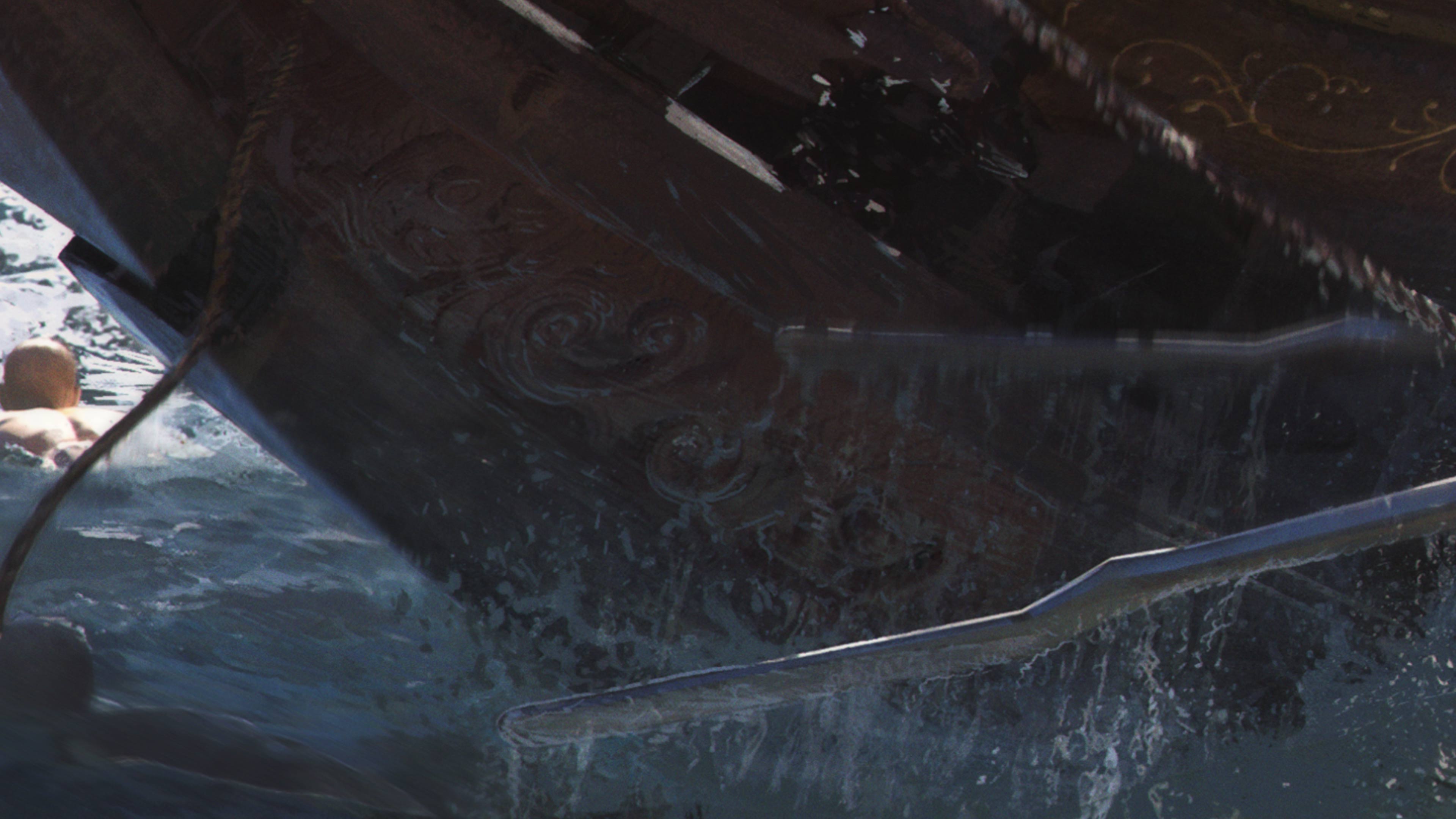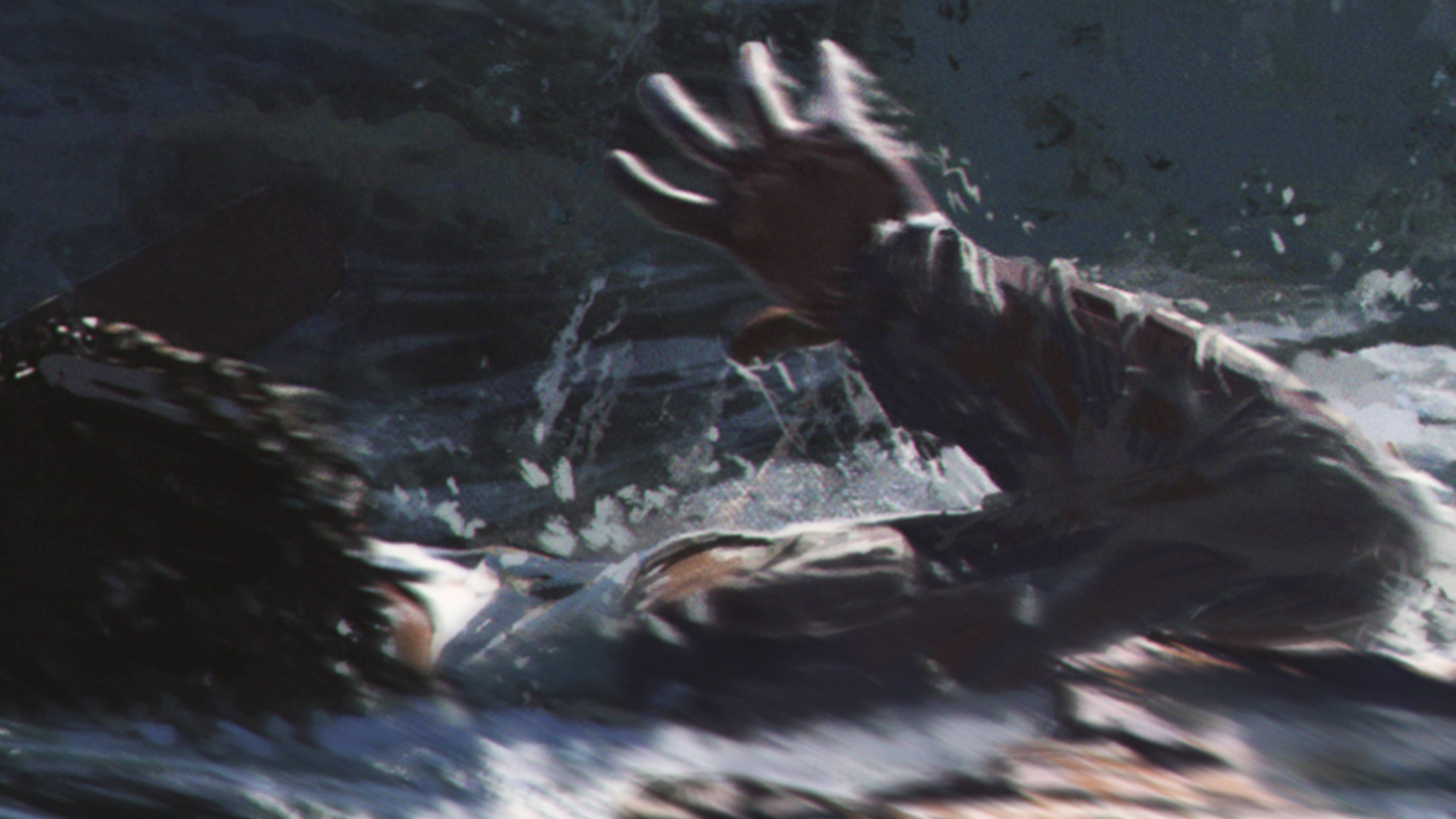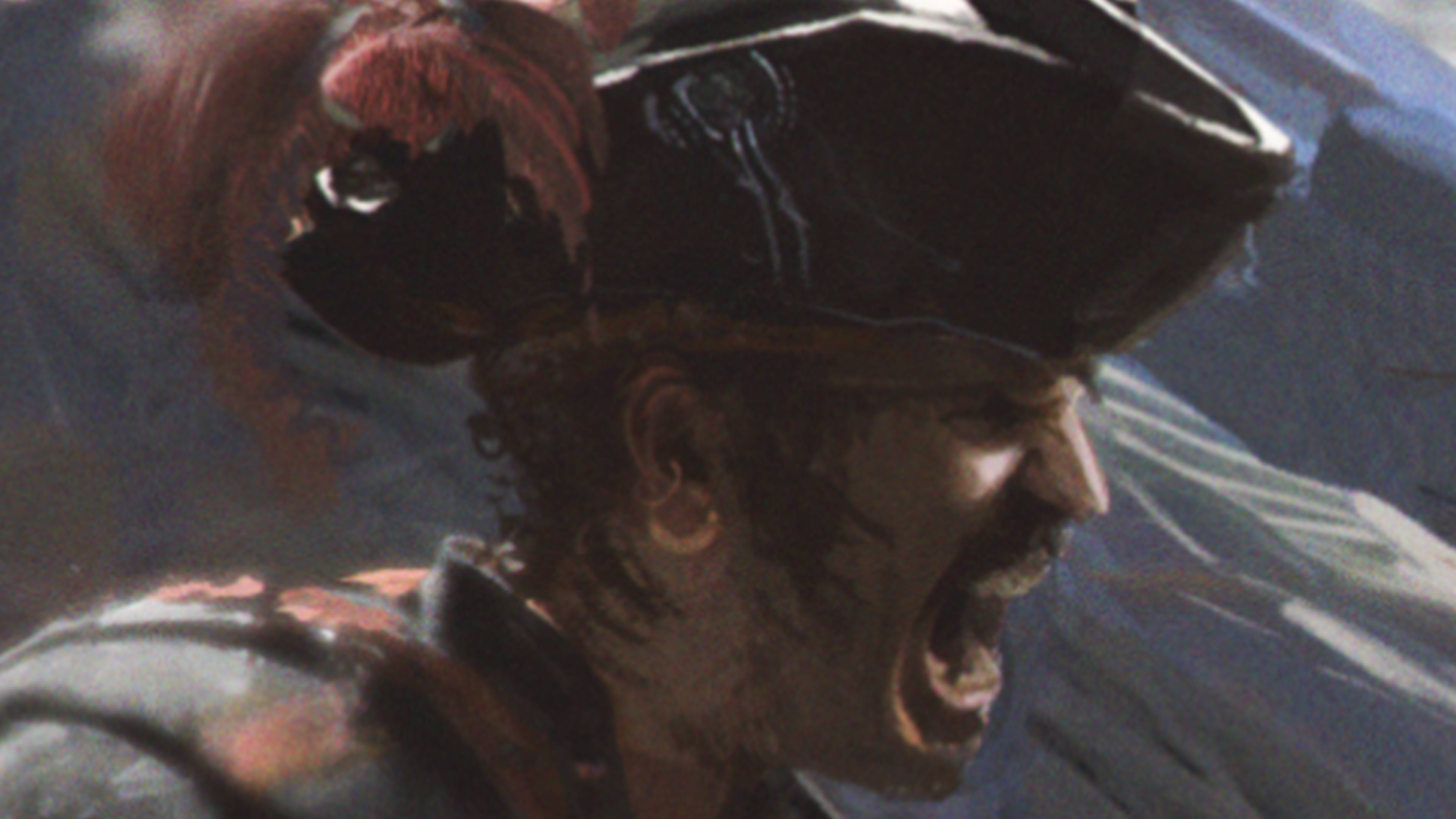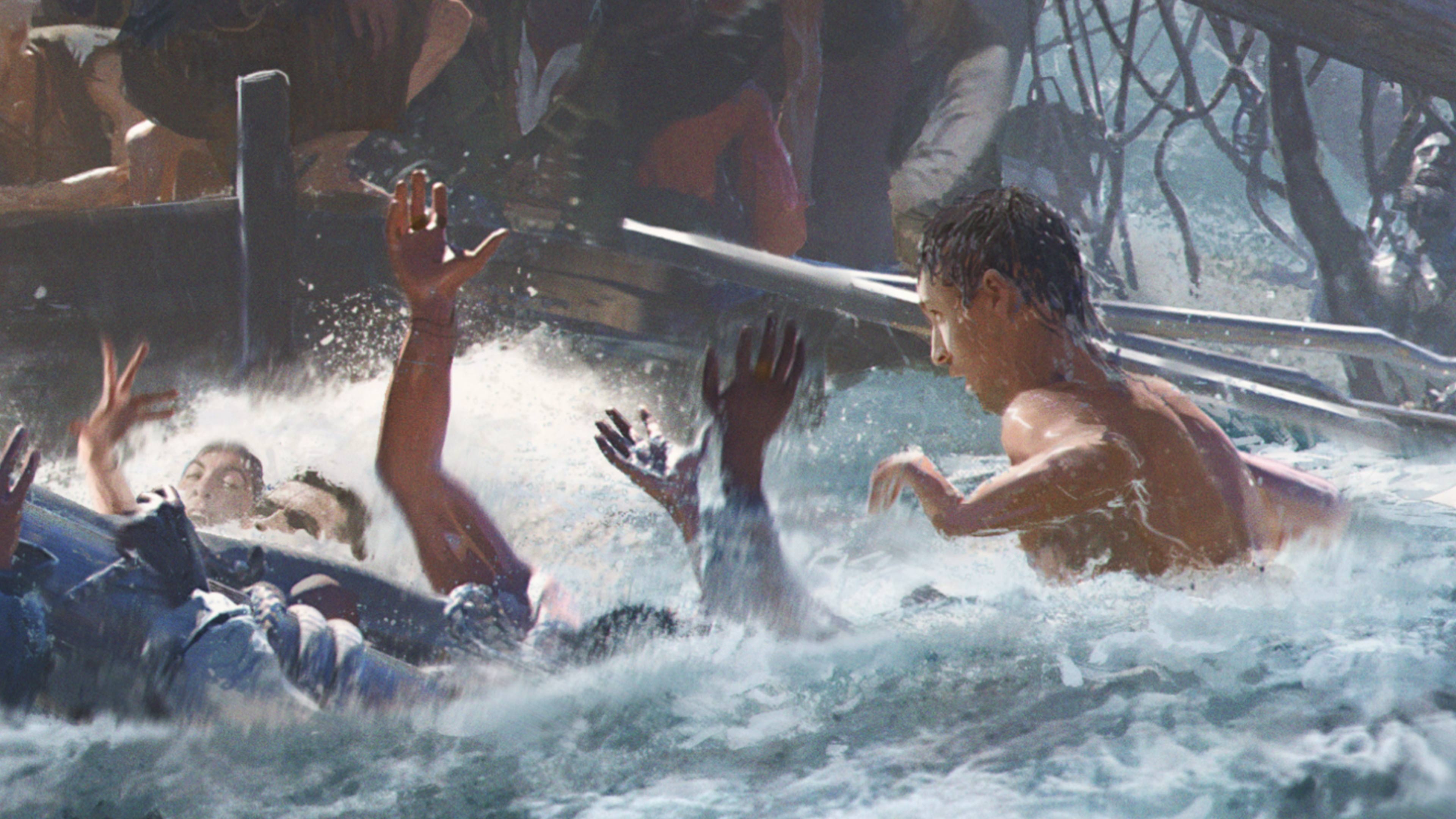
Making of video
↓ Below are two AI-generated videos created using Artlist and Midjourney (as of July 2025). They were made in just two clicks and under three minutes.
In contrast, my original concept took around three months to develop, partly because I had to learn many new techniques along the way, but also because good work needs time. From a concept art perspective, these AI videos add something: dynamic motion, drama, and a sense of chaos that I find helpful to sell the concept. That’s why I’m including them here. They contribute something that a single 2D artwork can’t convey. But they’re an addition, layered on top of the core design work.
But at what cost?
AI’s energy consumption is spiraling out of control. Additionally it’s built on the backs of artists. Let’s be honest, it’s theft. It’s displacing jobs, undermining creative labor, and reshaping the industry faster than we (or I) can react. But refusing to adapt in our industry often means falling behind, but adapting feels like surrender. The result? While using AI, I am also feeding the system which is replacing me.
So why did I do it anyway?
Because it’s so easy, and too tempting, to finally see the artwork “in action,” even if only for a few seconds. While painting, I found myself mimicking the sound of the waves, imitating heavy winds, imagining how the ship would move. That clip had been playing in my mind the entire time, without AI, just imagination. And now, with two clicks, it actually moves and everybody can see it. The temptation was hard to resist. So I’ve included the videos here as part of this concept design package with this disclaimer.
AI Generated Movie (Artlist)
AI Generated Movie (Midjourney)
Fine Arts Inspiration
When most people think of pirates, they picture scenes from Pirates of the Caribbean or other romanticized stories. For me, it was different. I once read (a German translation of) Exquemelin’s pirate book “De Americaensche Zee-Roovers”, and it showed a much harsher reality.
What truly inspired me, though, were old paintings. These artworks weren’t snapshots of the moment, they were painted from memory. Still, they’re full of raw, brutal energy. The sea is unforgiving. Ships are tossed like toys by the waves. Look closely: masts snap like matchsticks, ropes twist into deadly traps, sails bury entire crews. There’s no escape.
The idea of launching a small lifeboat into that chaos, that’s where my inspiration came from.
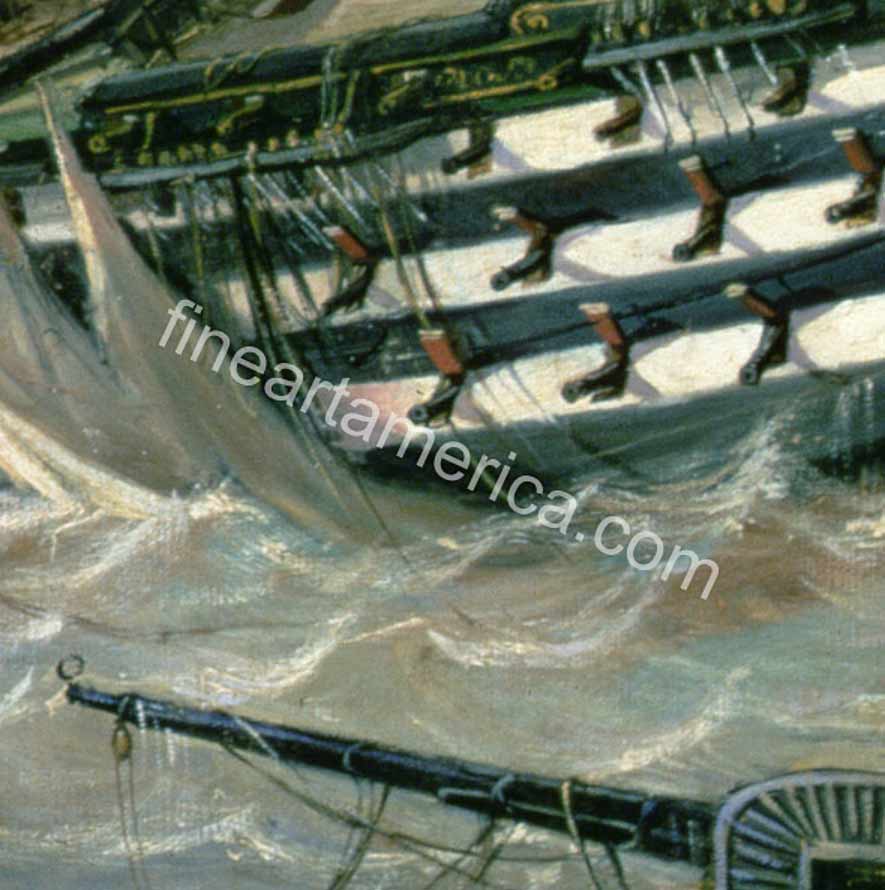
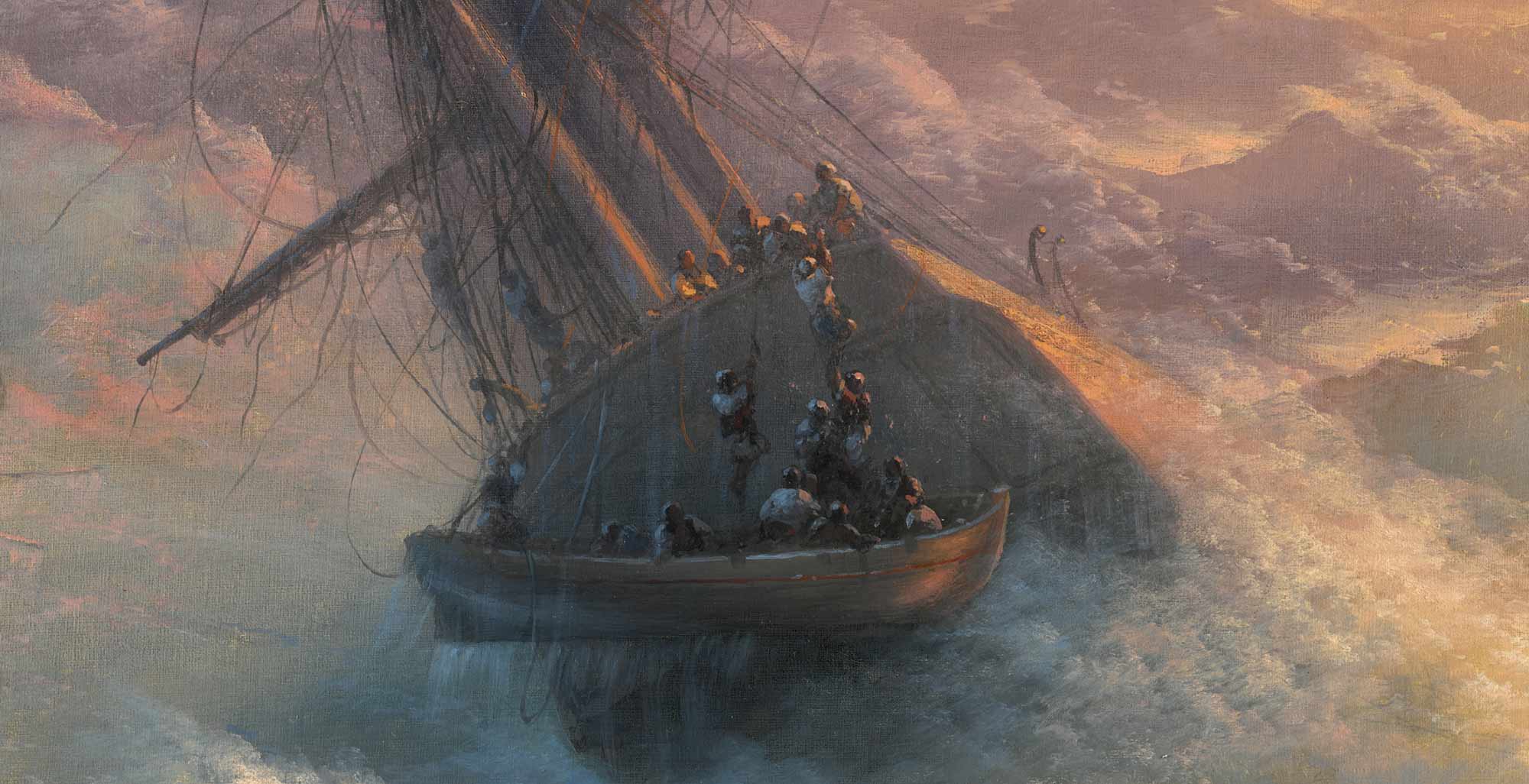
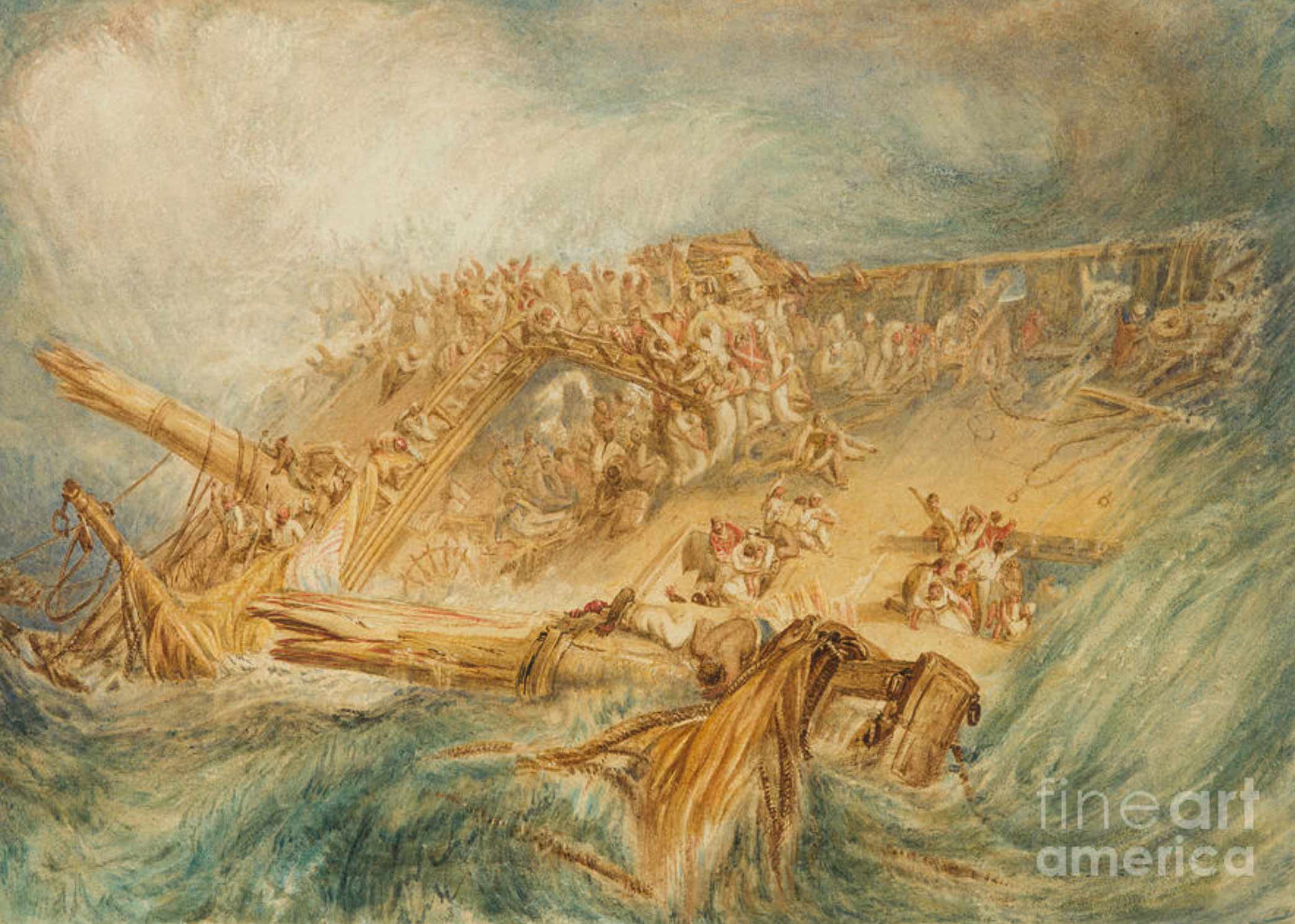
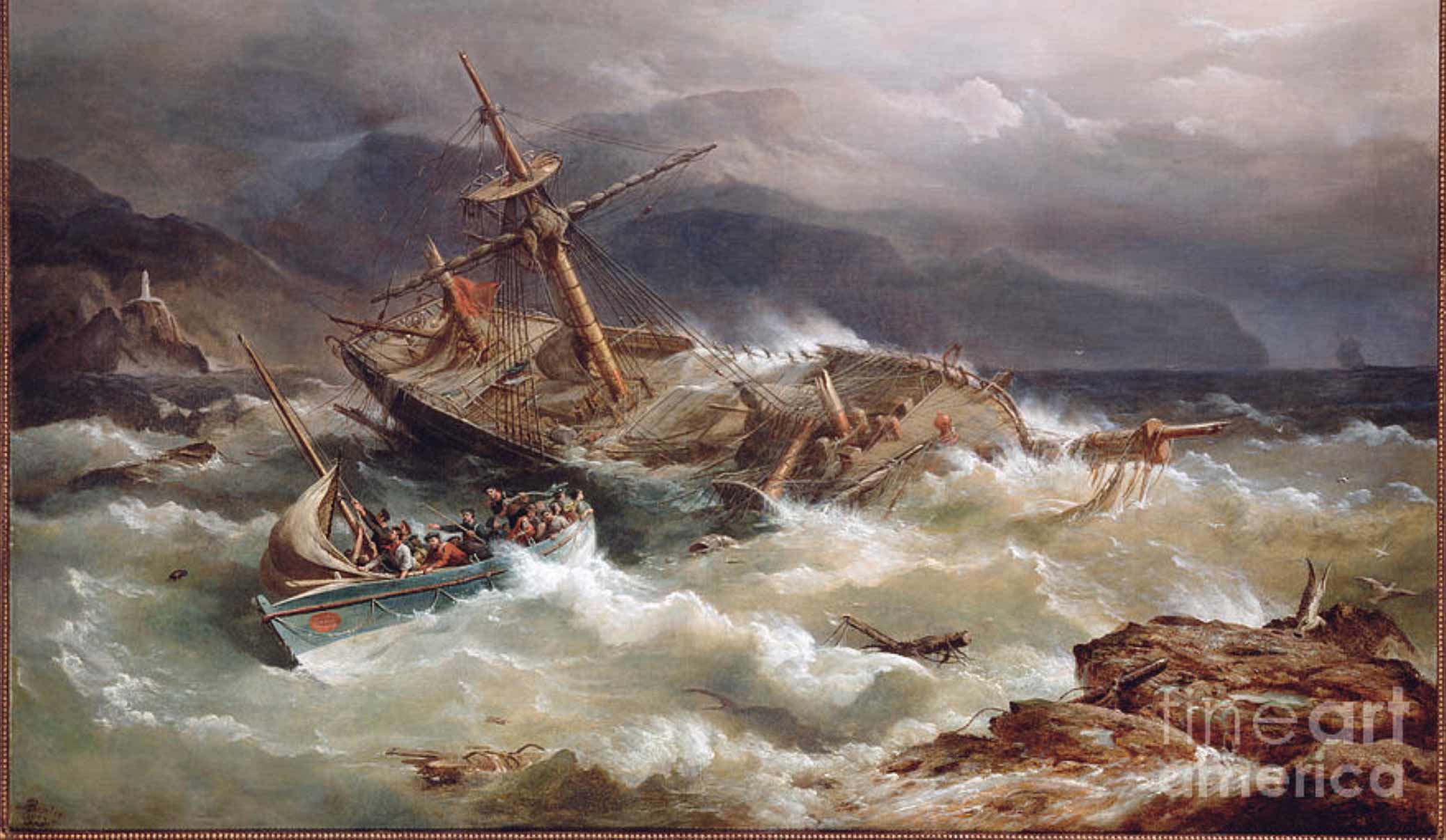
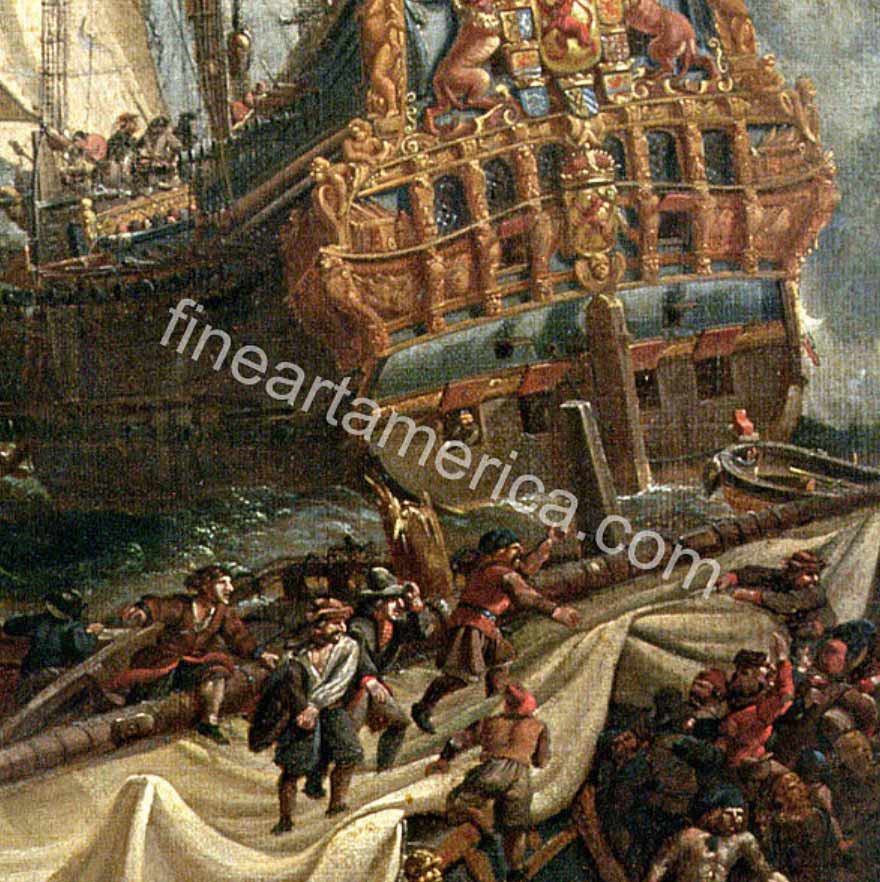
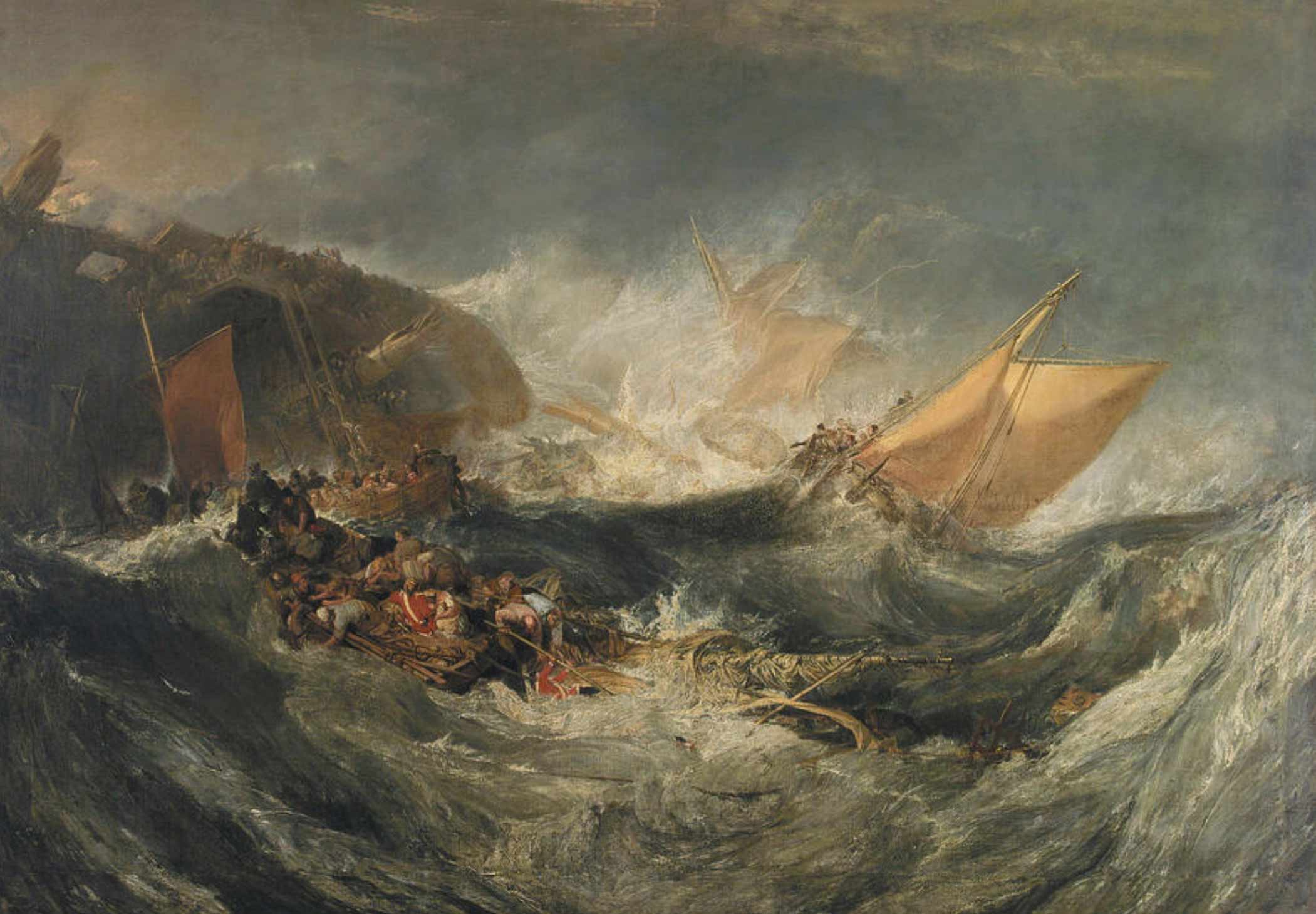
Replica as main Reference
The Duyfken probably never really saw the caribbean sea. But there were just very good imaginery references out there, and it fit the general needs and time period for a proper pirate ship.
“Duyfken (Dutch pronunciation: [ˈdœyfkə(n)]; lit. ‘Little Dove‘), also in the form Duifje or spelled Duifken or Duijfken, was a small ship built in the Dutch Republic. She was a fast, lightly armed ship probably intended for shallow water, small valuable cargoes, bringing messages, sending provisions, or privateering.[1] The tonnage of Duyfken has been given as 25–30 lasten (49–59 tonnes or 108–130 thousand pounds).[2]: 14 ”
Images to the right: “The Duyfken Replica Project was founded by the Dutch-born Australian historian Michael John Young.[10] Young became aware of Duyfken as early as 1976 and lobbied extensively for a new replica project after the launch of the Endeavour replica in Fremantle, Australia in the mid-1990s.”
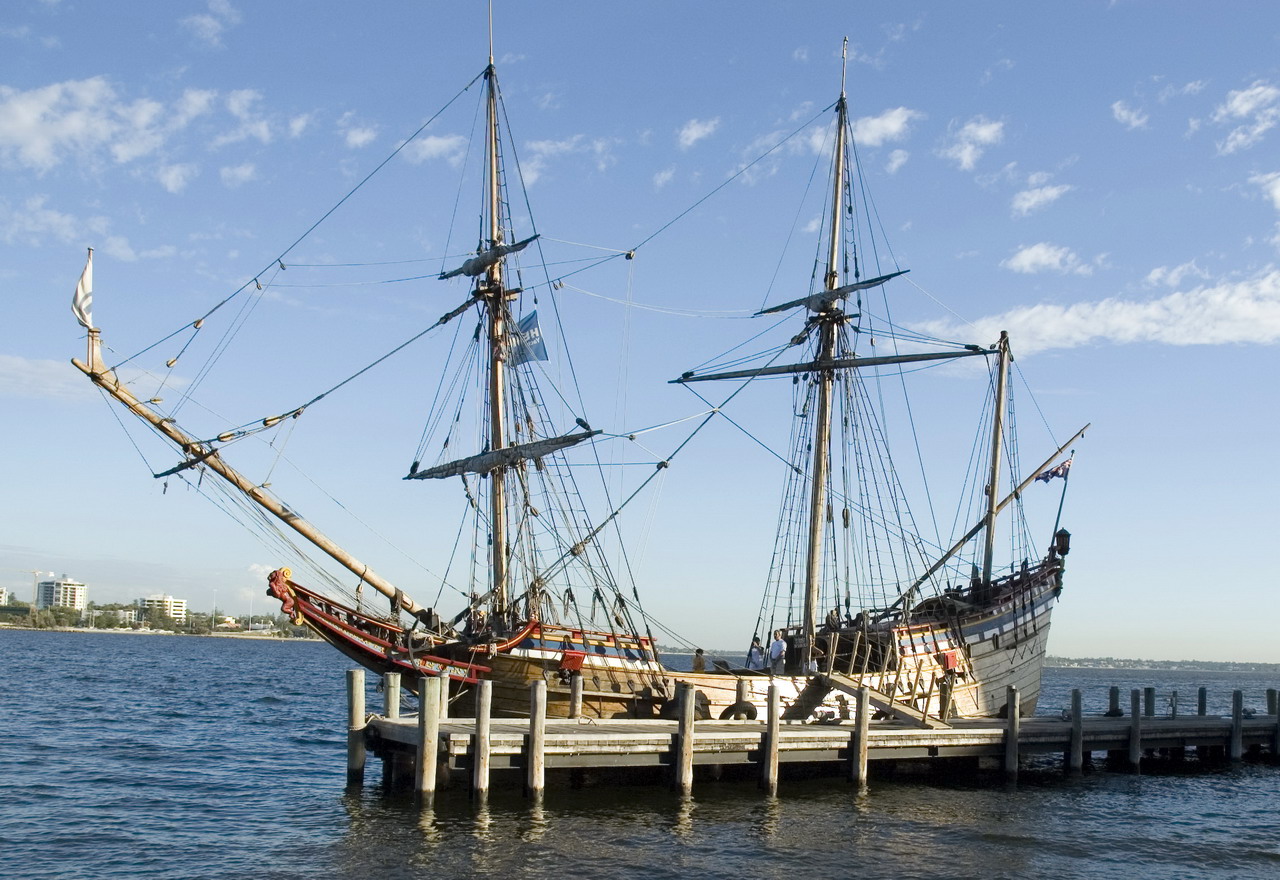
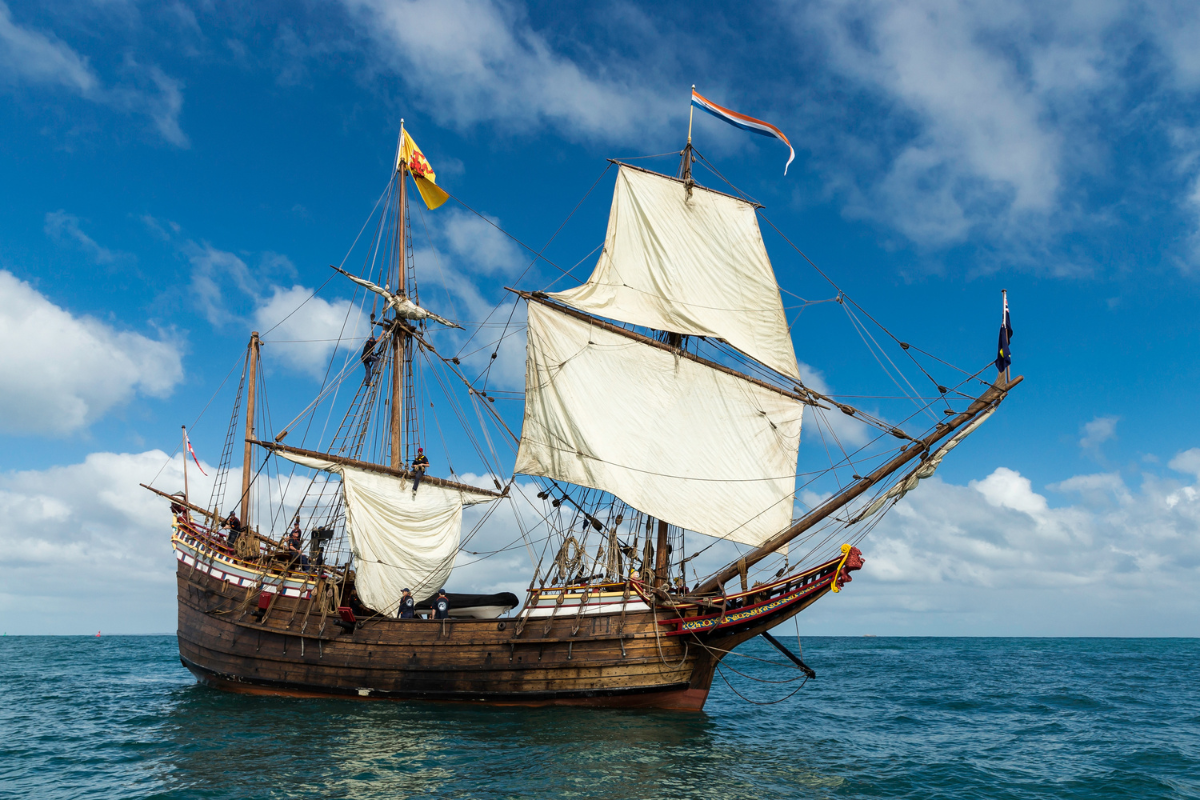
Additionally, I found inspiration in modern-day photography of sailing ships at sea—or even sunken replica ships. The bright blue underwater spray, the light, the movement, it all adds to the drama and power of the moment.
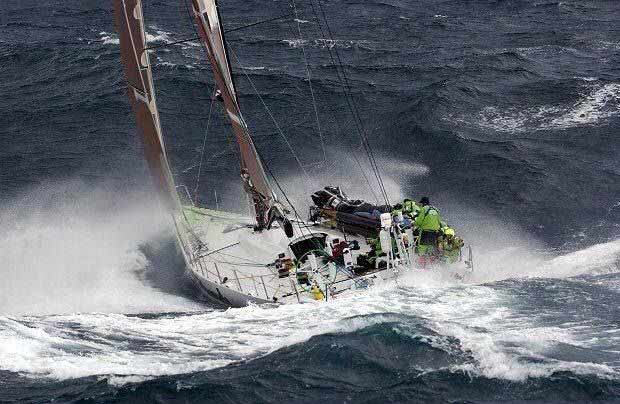
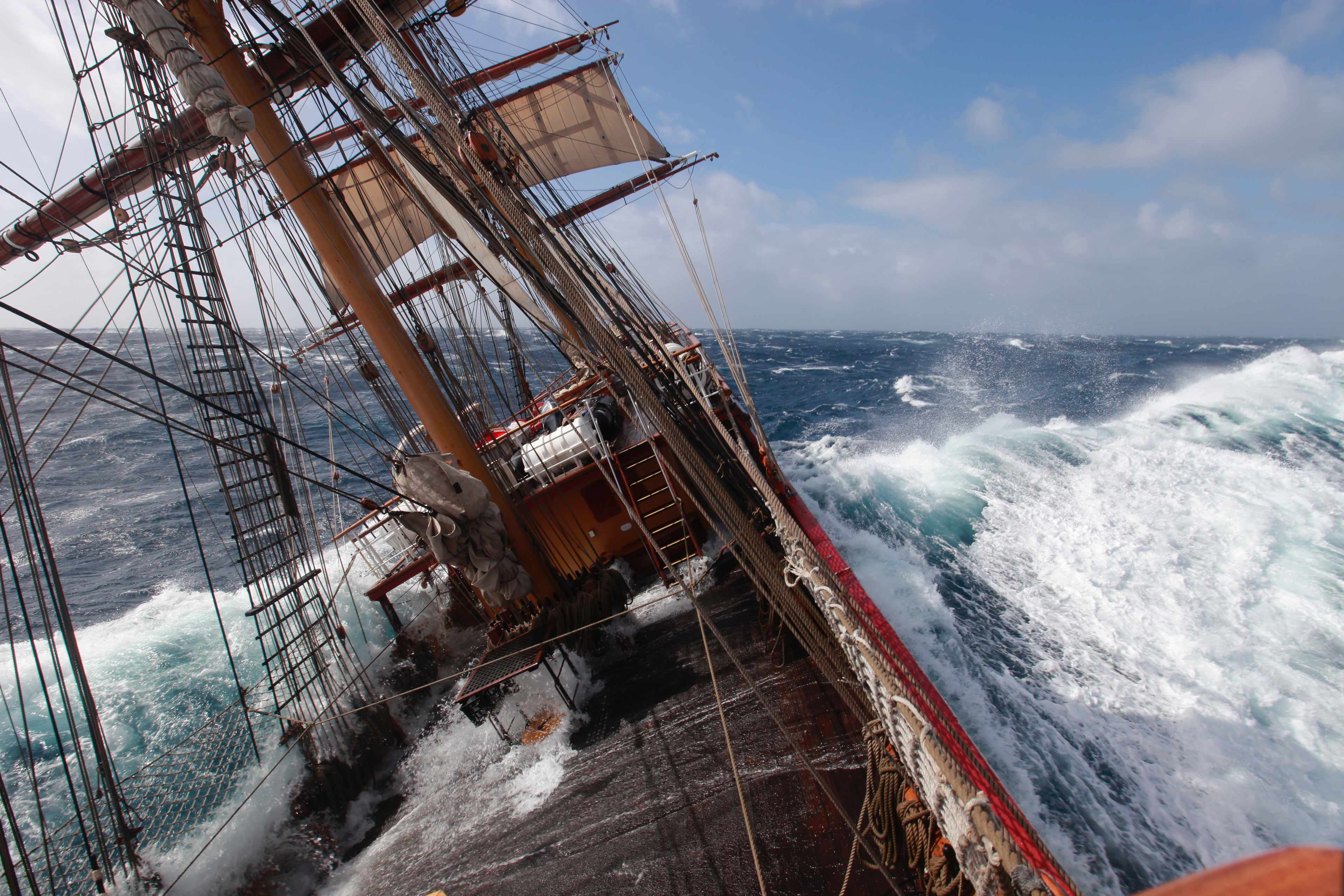
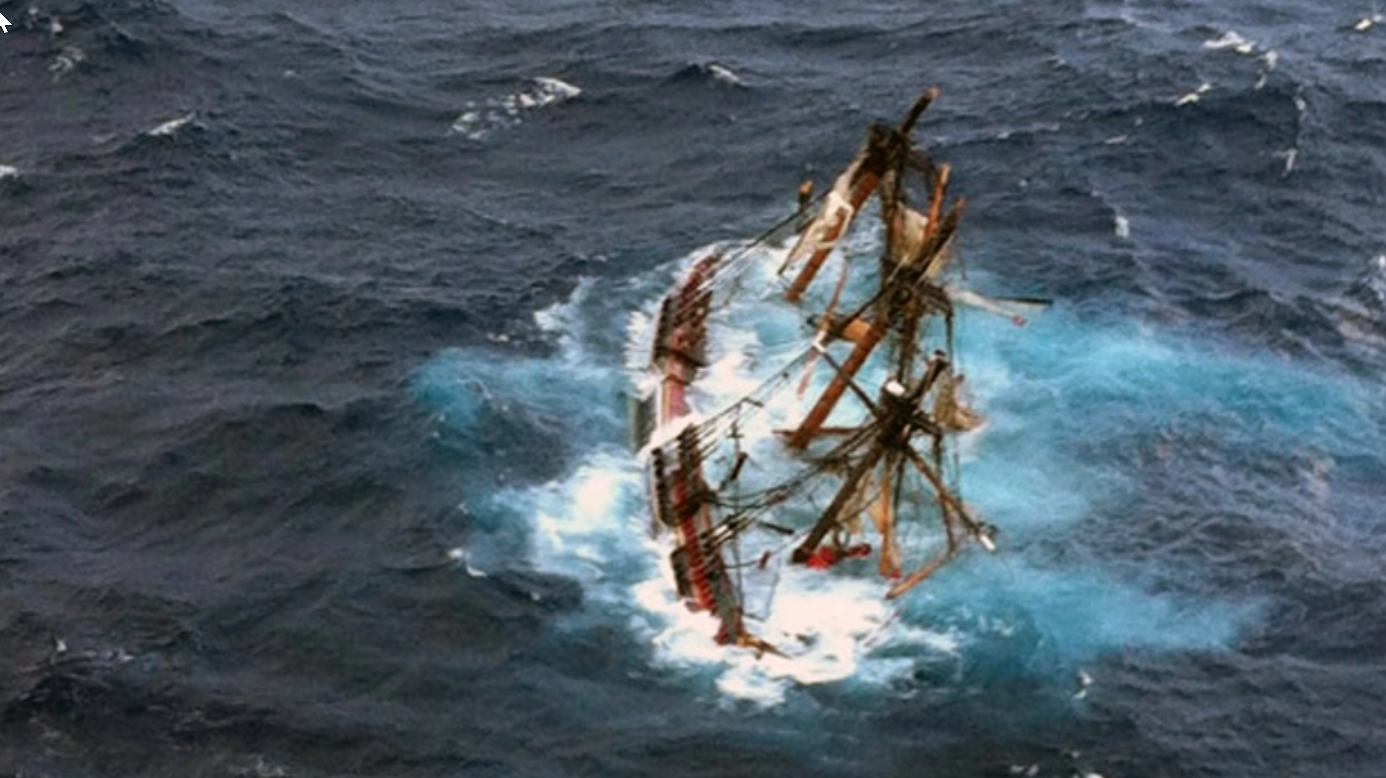
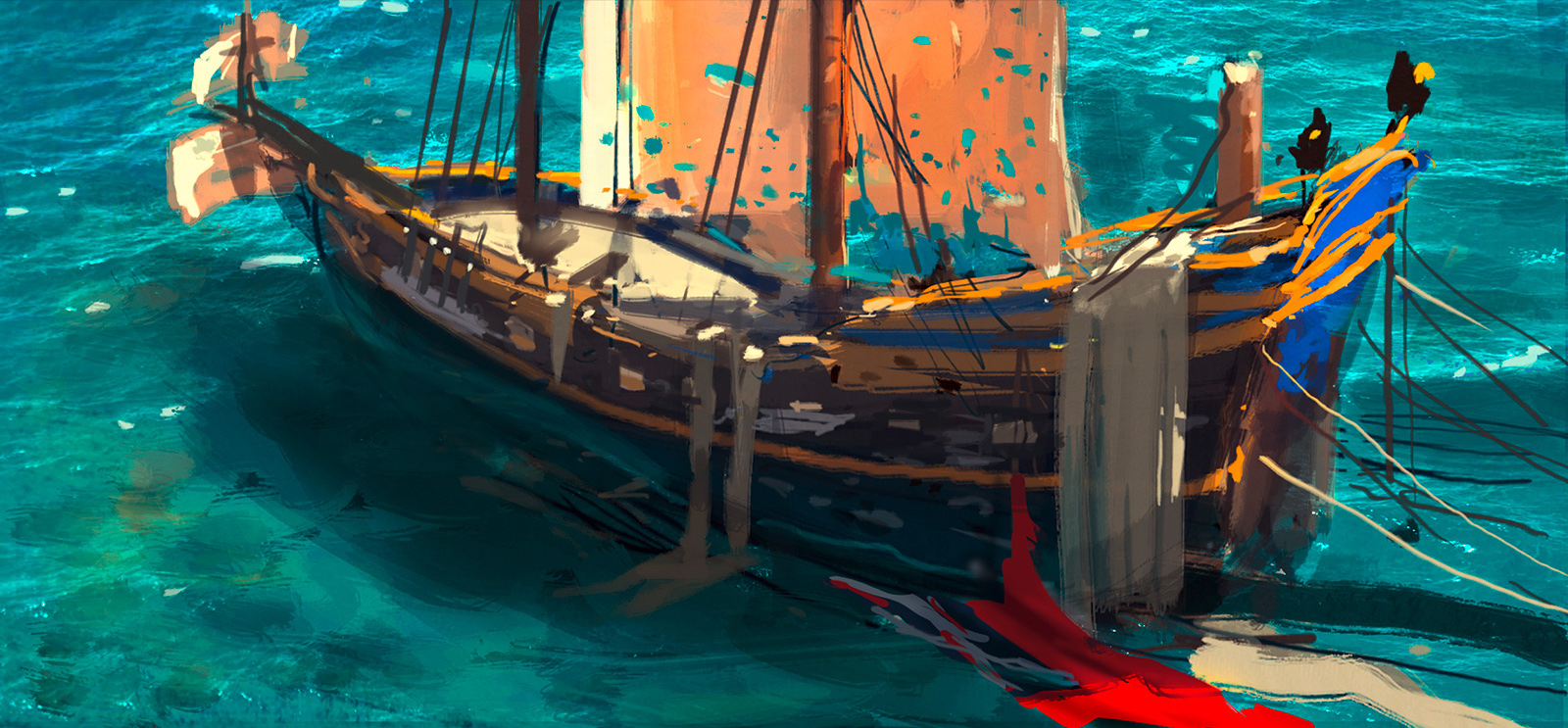
The Main Inspiration
This mood painting, created for Goodgame Studios several years ago, served as my main inspiration. I was drawn to the contrast between the beautiful Caribbean sea and the elements of destruction, like the hanging ropes and tattered flags.
Below: first draft in Blender
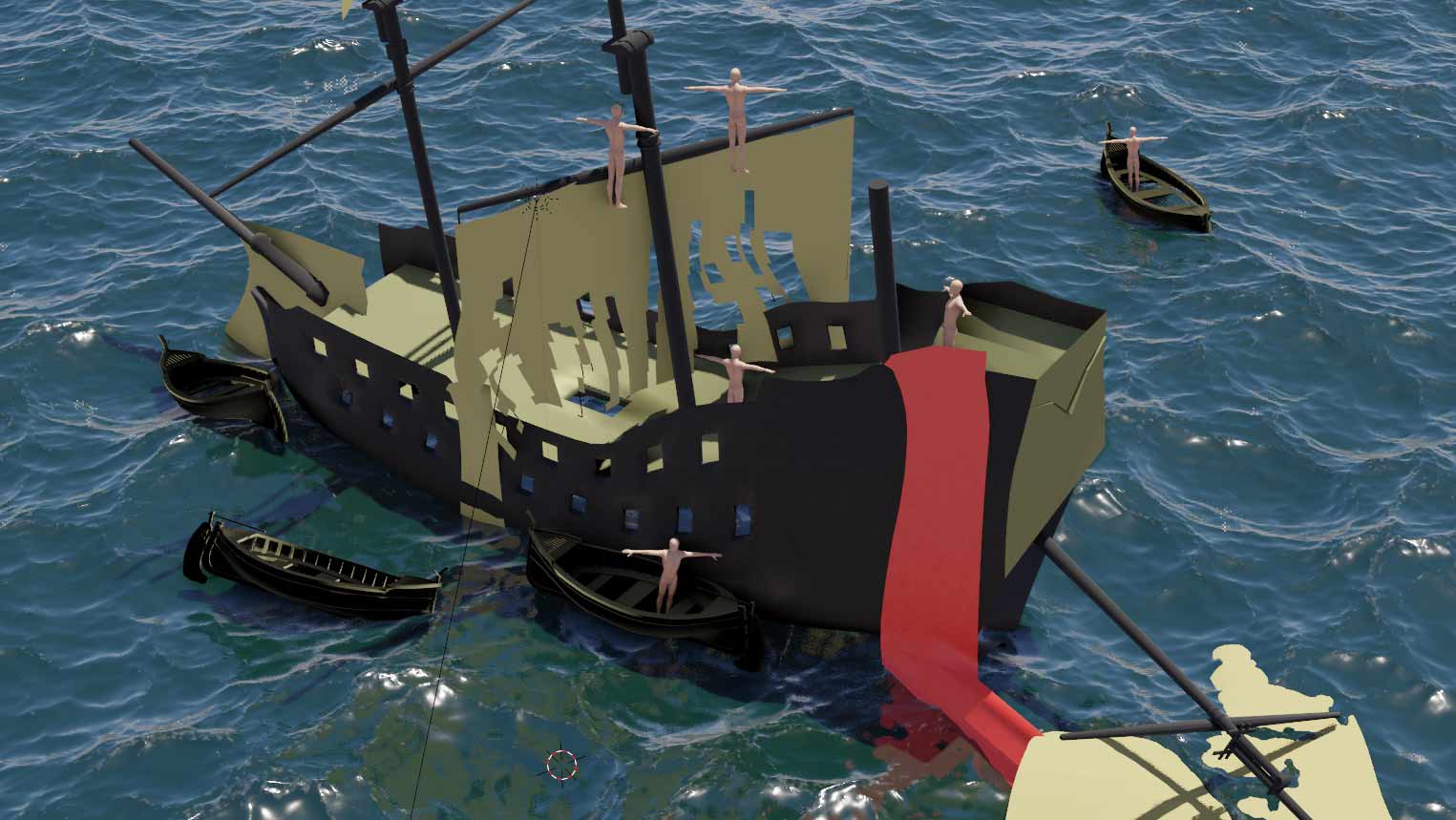
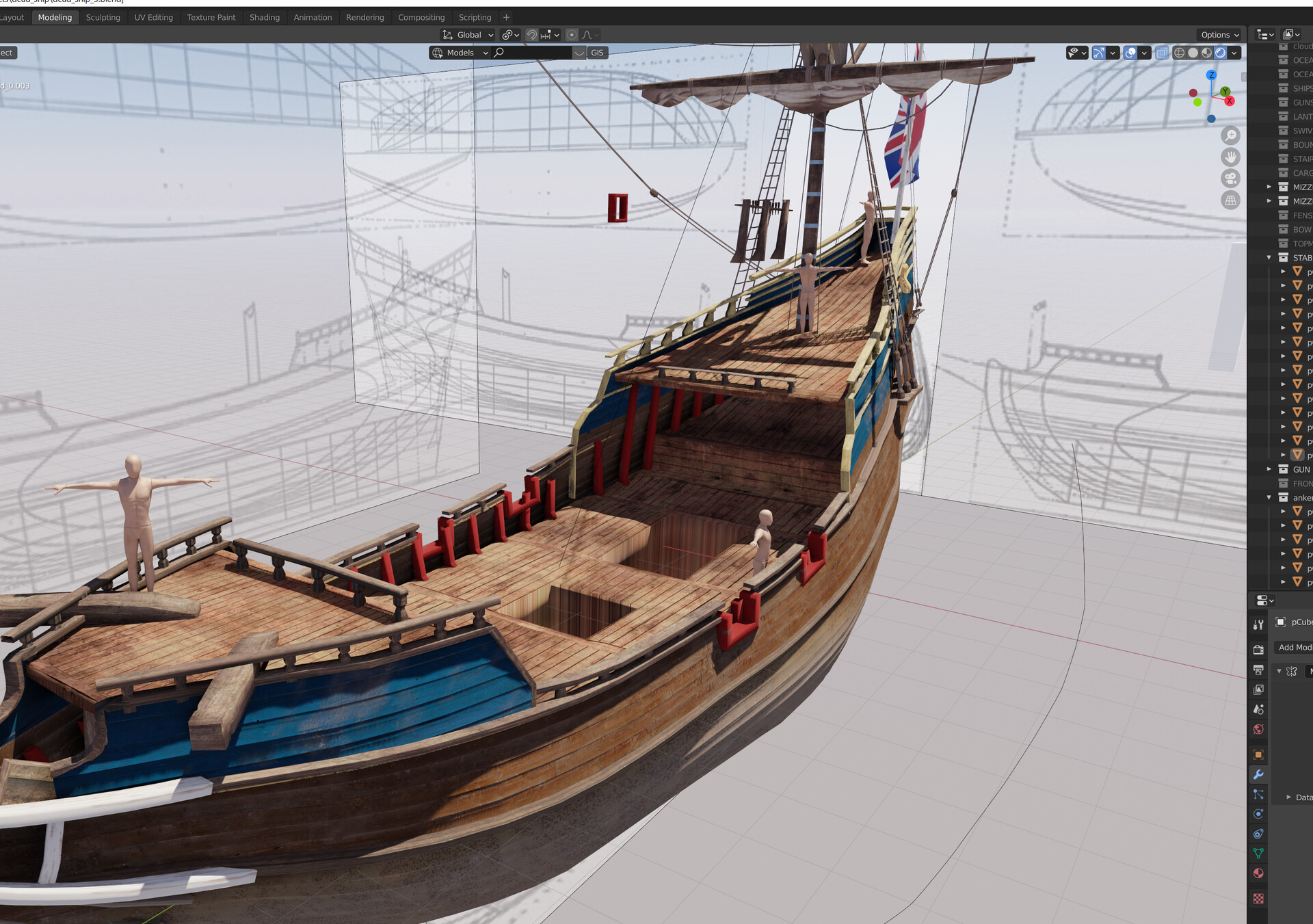
The Process
I started by reconstructing the ship from the ground up, using rough but sufficient reference plans. At this stage, some initial textures are already in place. Historical accuracy wasn’t the main goal. I focused on solidifying my skills in Blender and general modeling.
Images below: reference blueprint plan and destruction playground. I experimented with booleans combined with decals to achieve the damaged look.
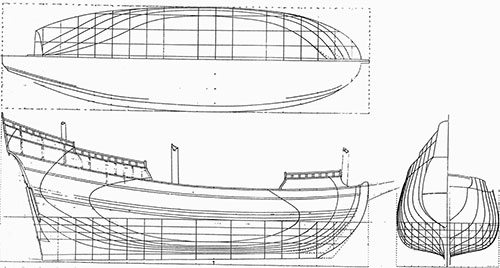
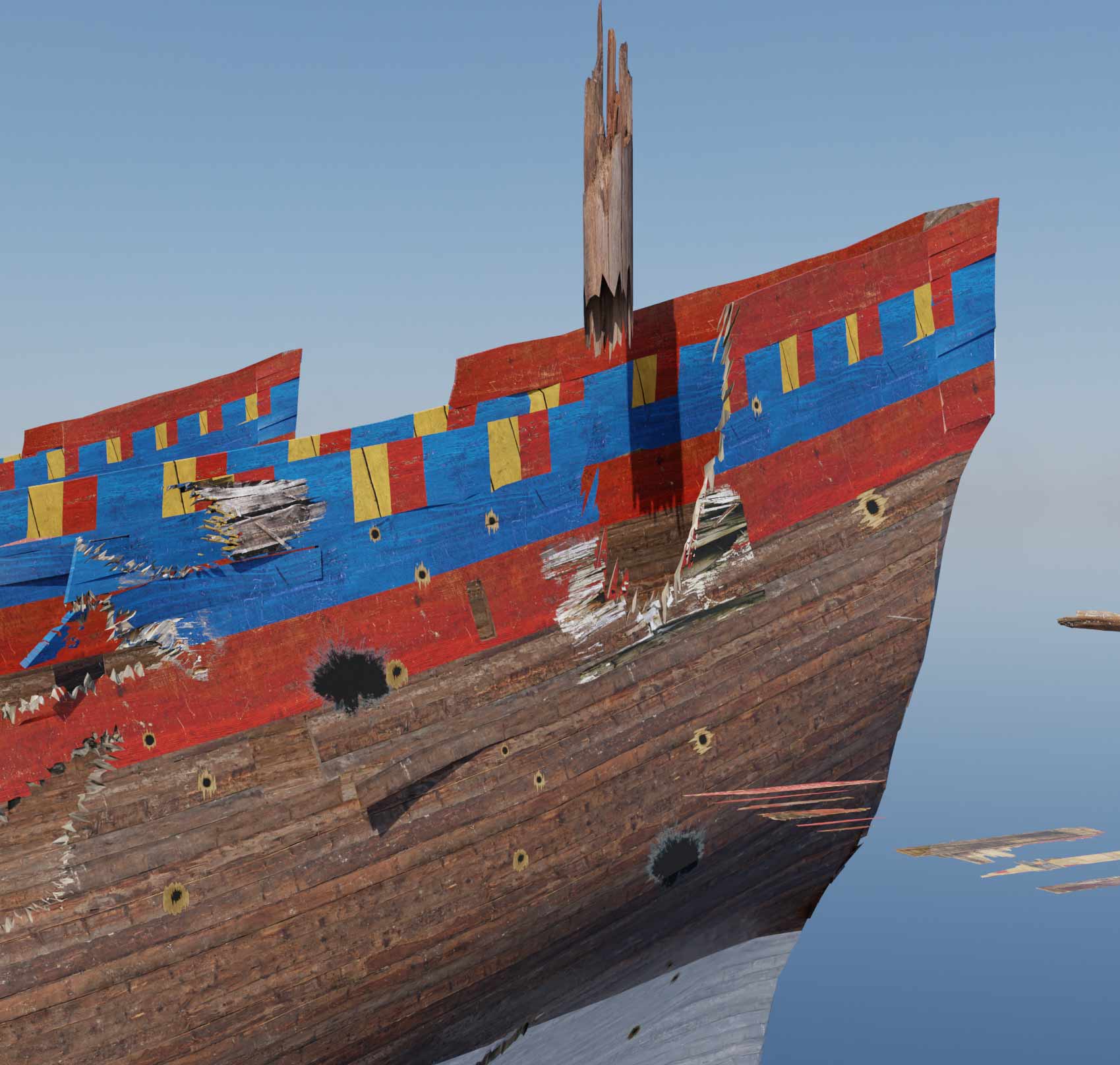
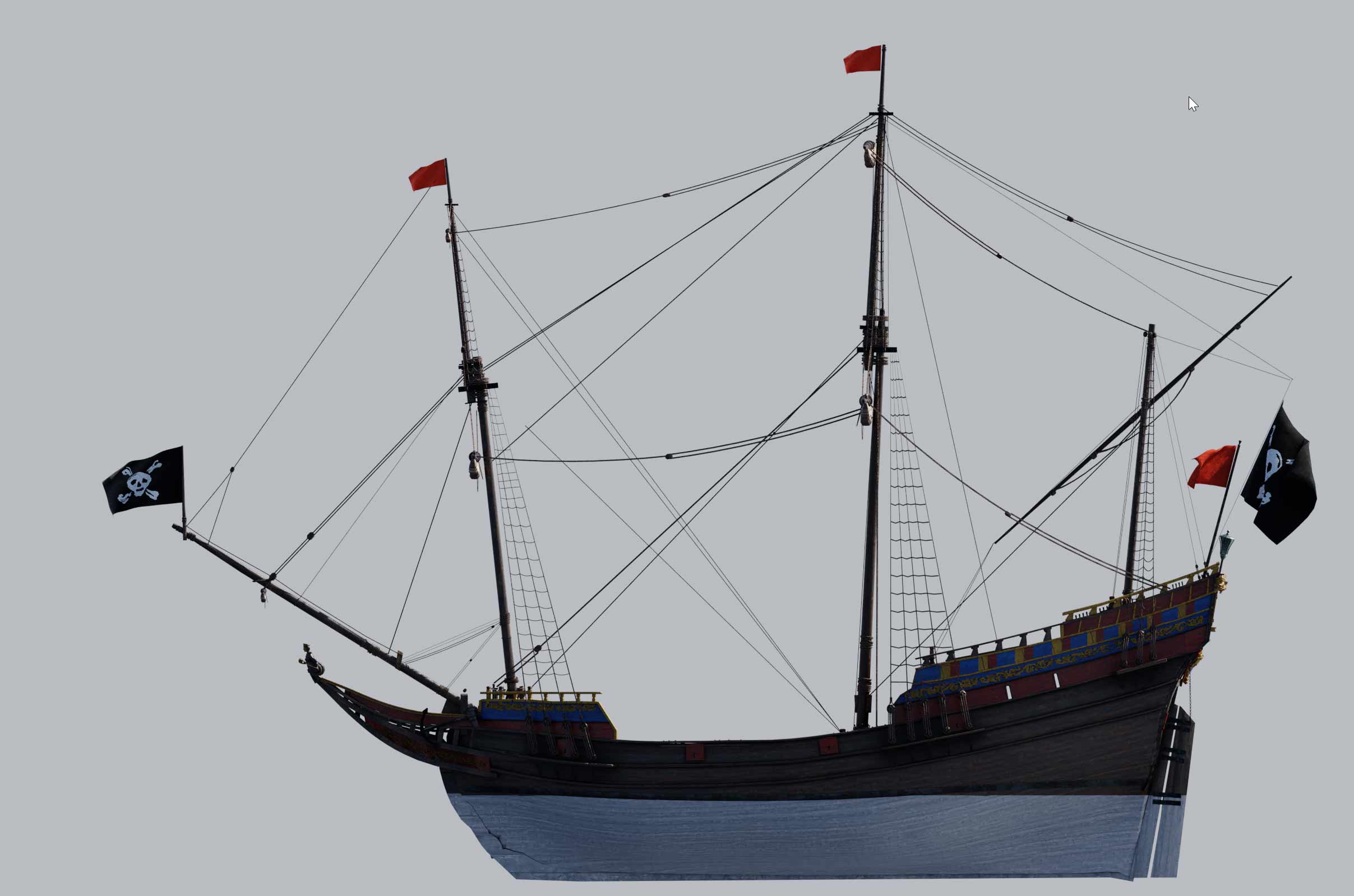
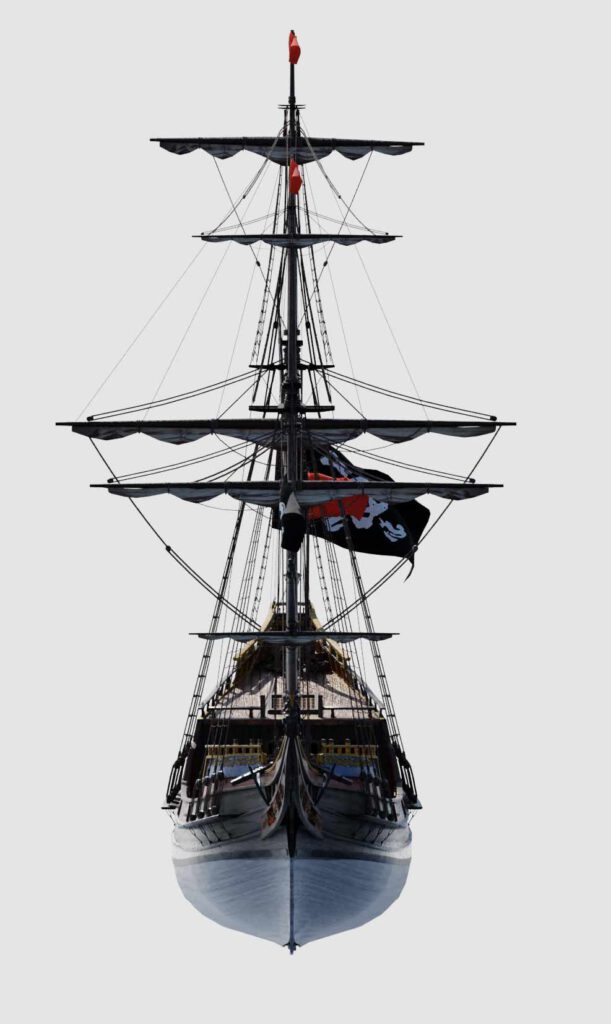
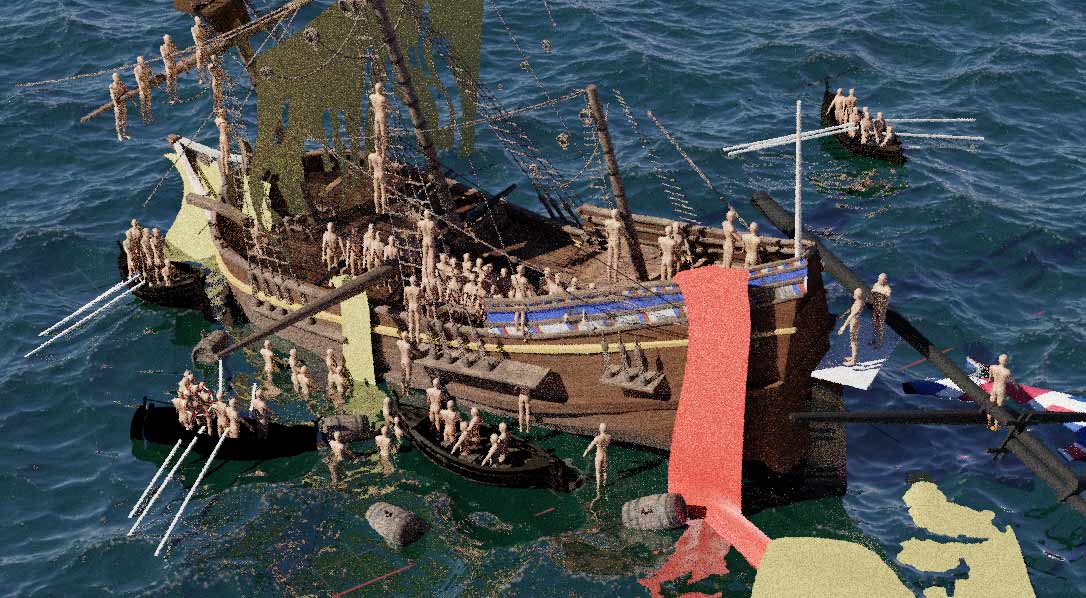
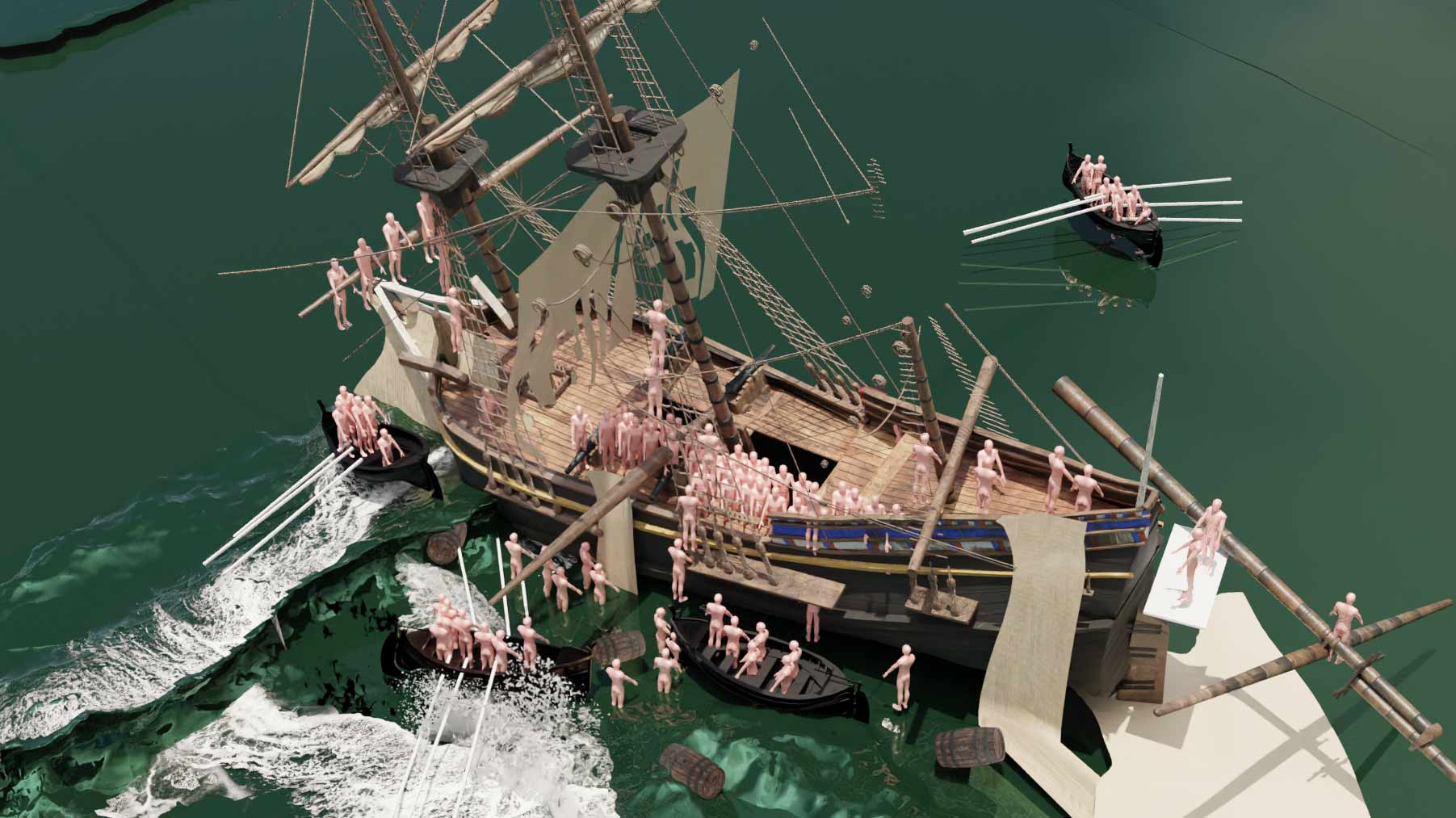
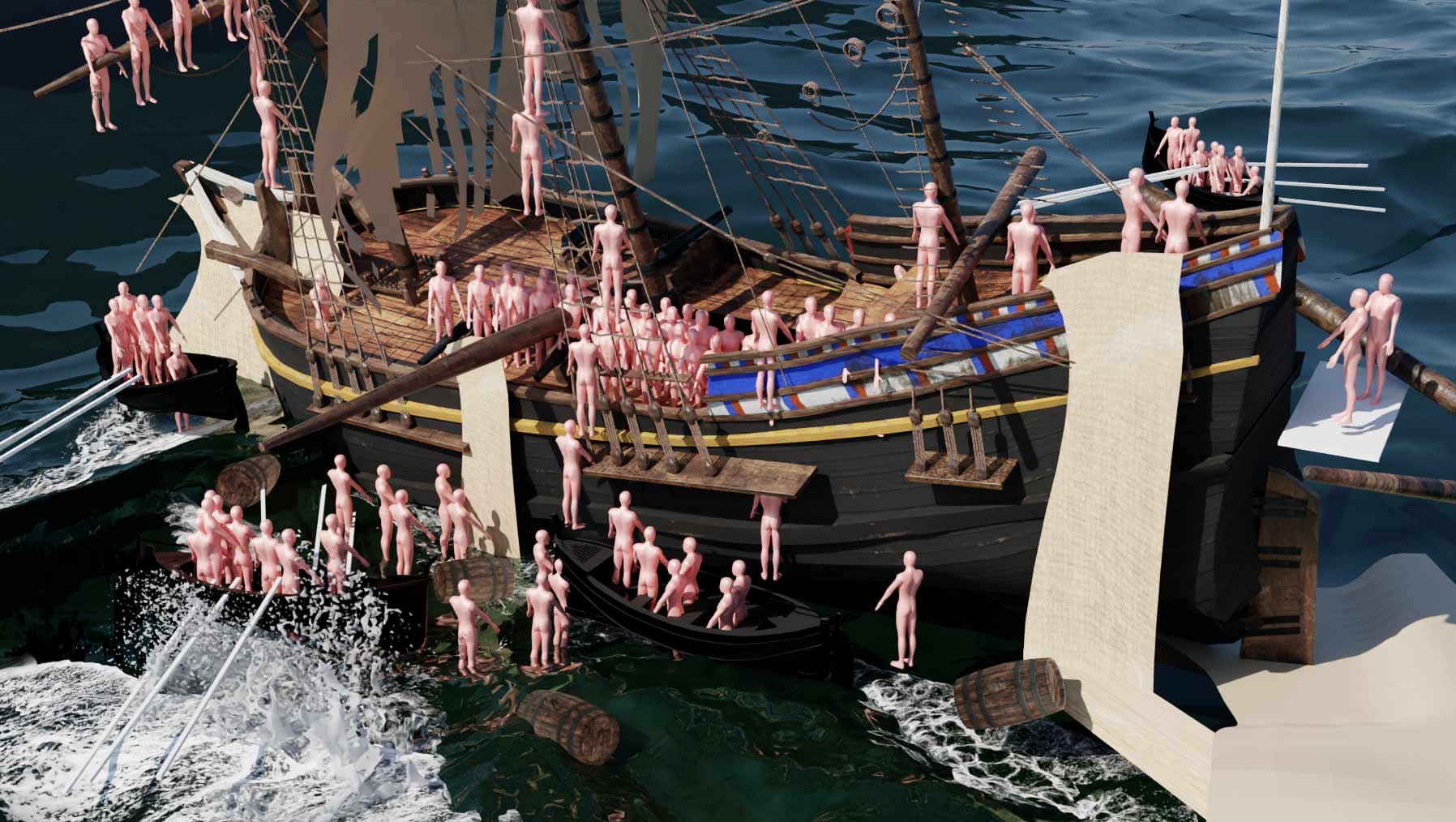
Set dressing
Once the ship modeling and texturing were roughly finished, I started assembling the scene. At first, I kept the original camera perspective from the illustration above. But pretty quickly, I realized it might be a good idea to explore other camera angles as well.
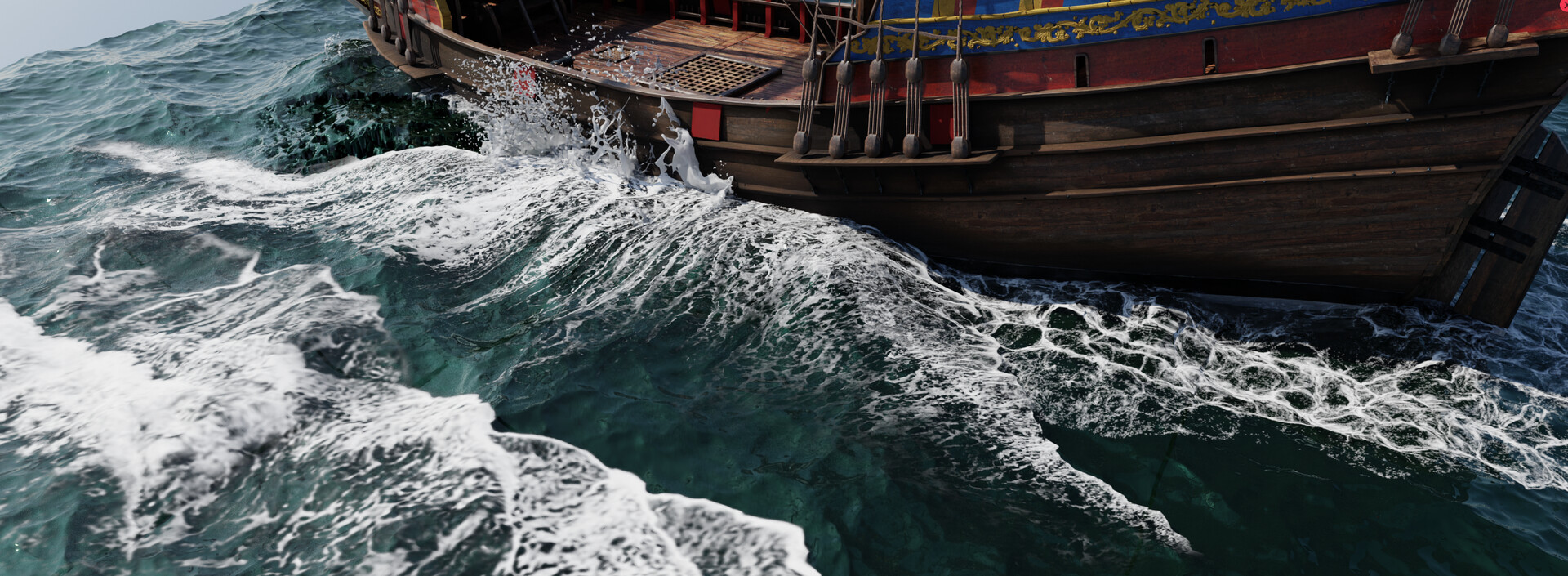
Blender Ocean modifier. Additionally some water alphas: worked out great for a still 2D image.
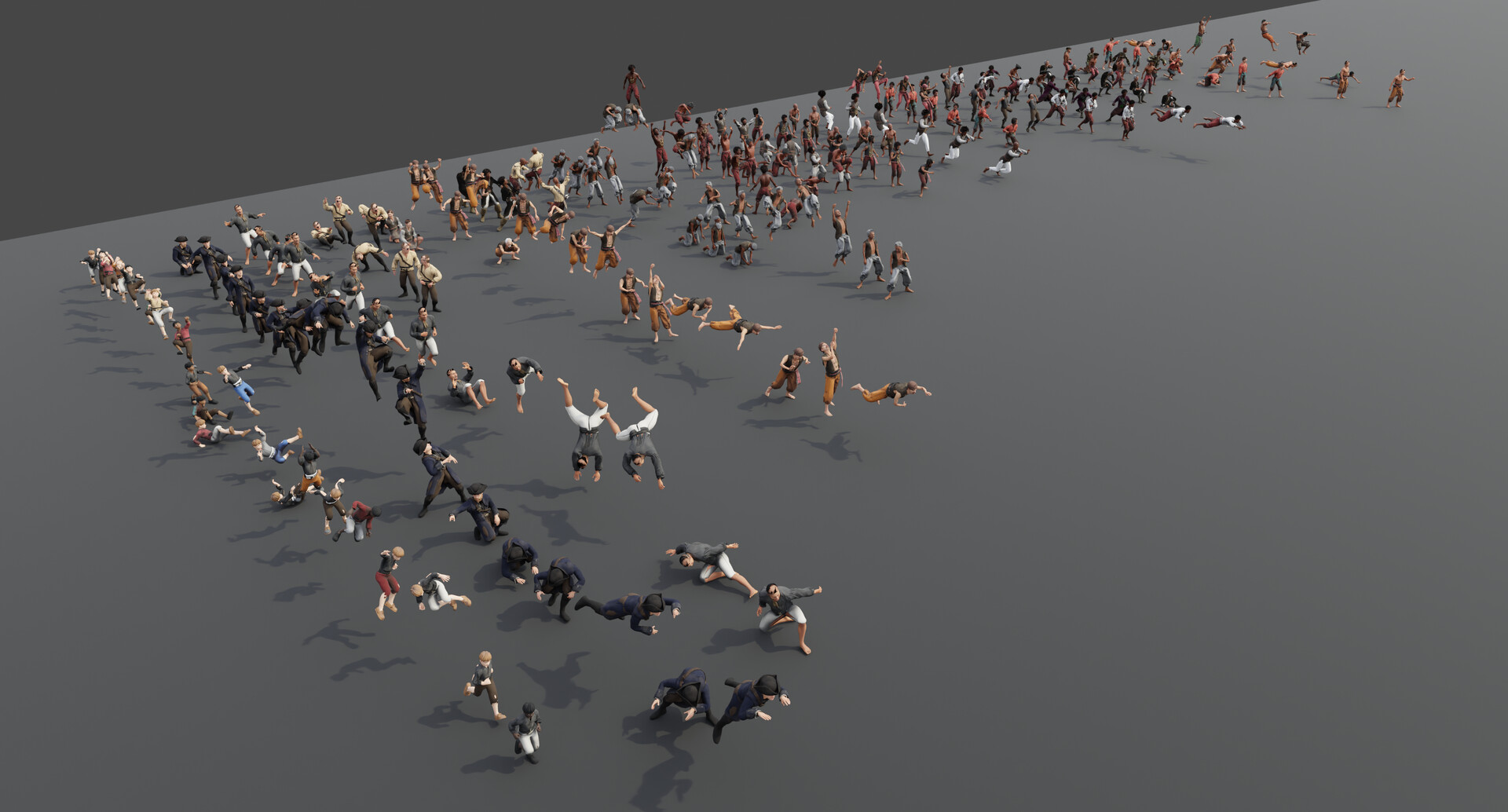
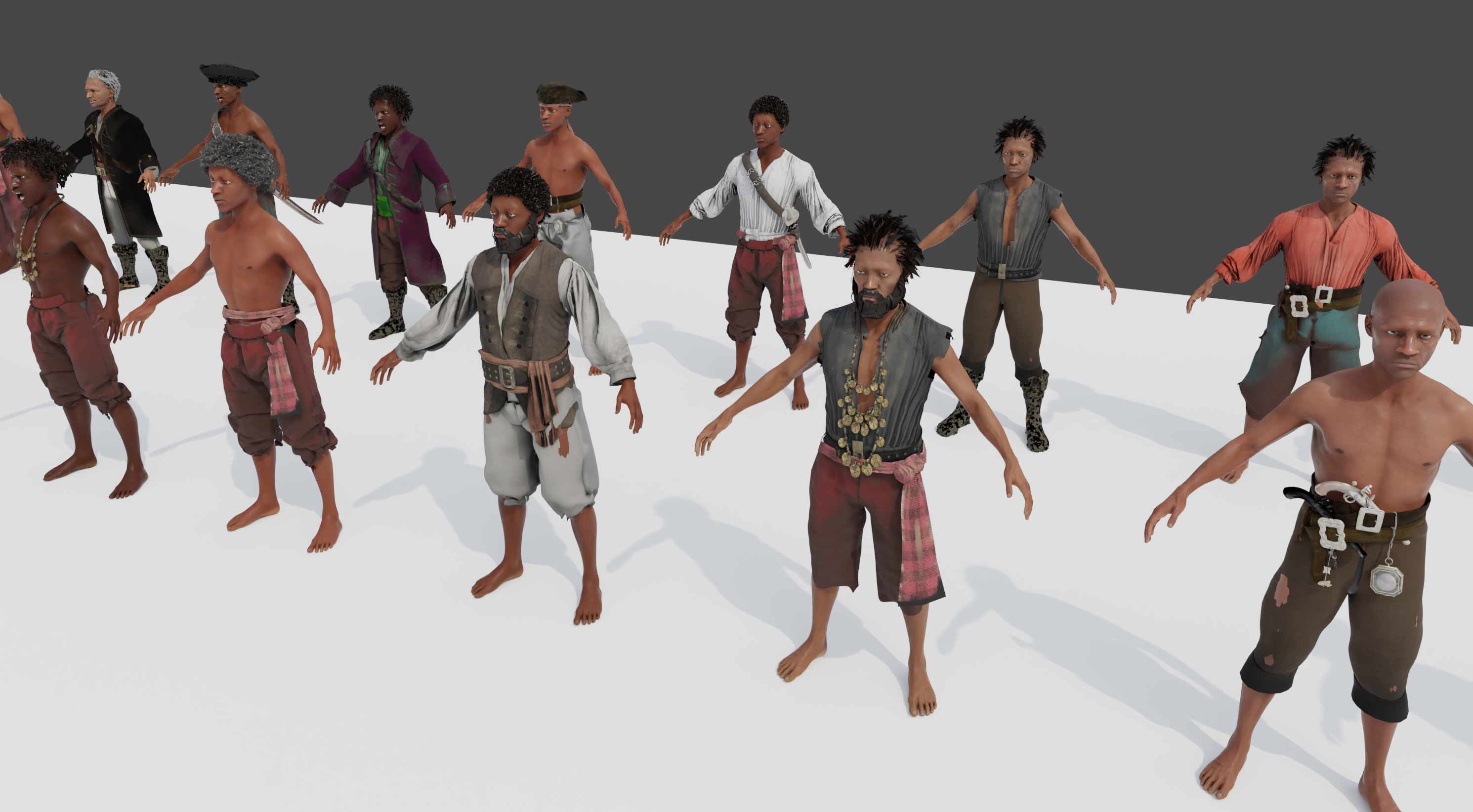
Pirates
My previous concepts often lacked characters, so this time, I wanted to change that. I went a bit wild with Mixamo back in the day, experimenting and pushing things further than usual. I used Blender add-ons to create the characters, along with various plugins and purchased assets to give the pirate more variety and detail.
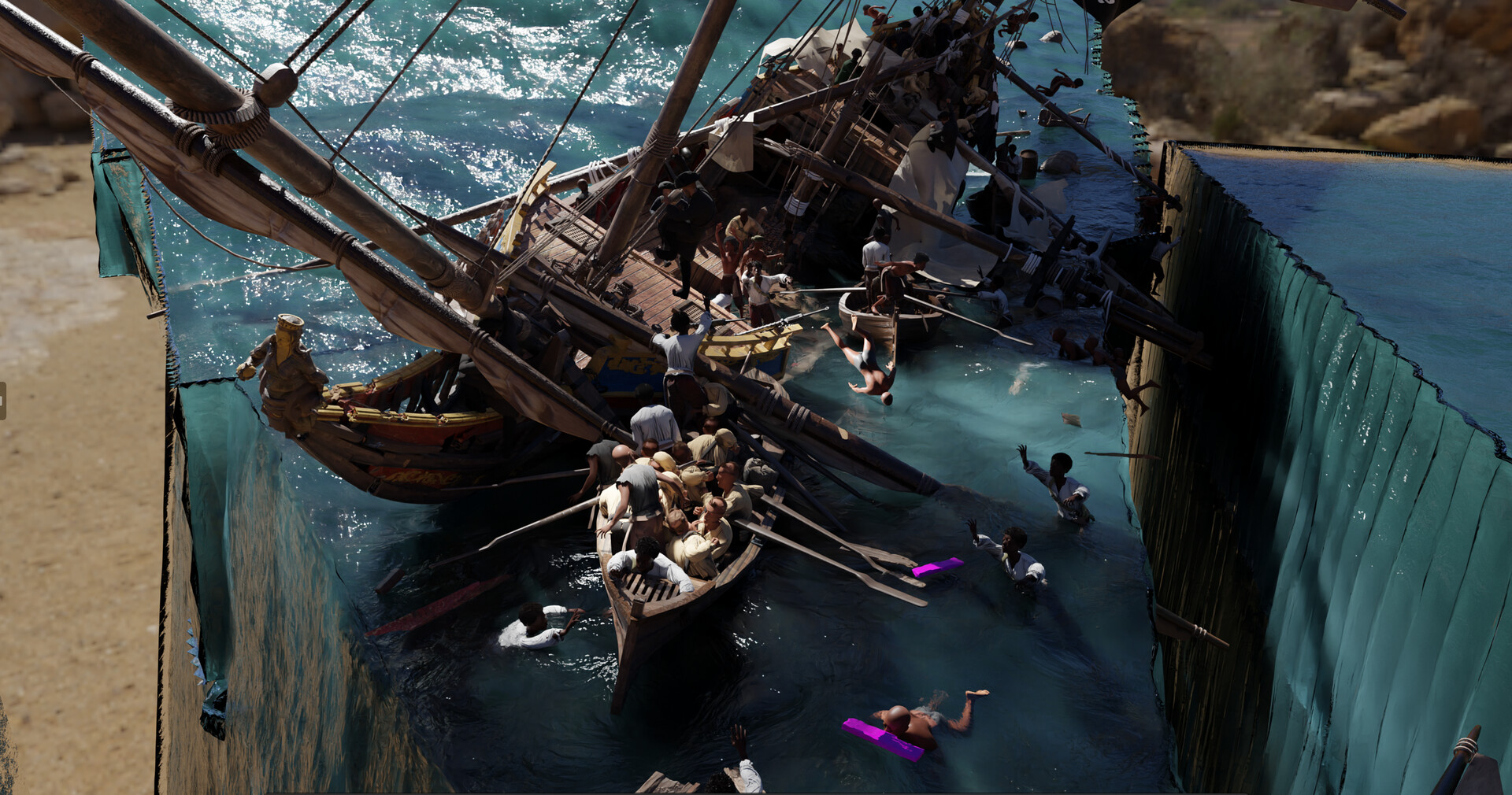
Water shader
I experimented with advanced water shaders during development, but from the final camera angle, most of it ended up barely visible. In the end, I chose a simpler solution, both for clarity and performance.
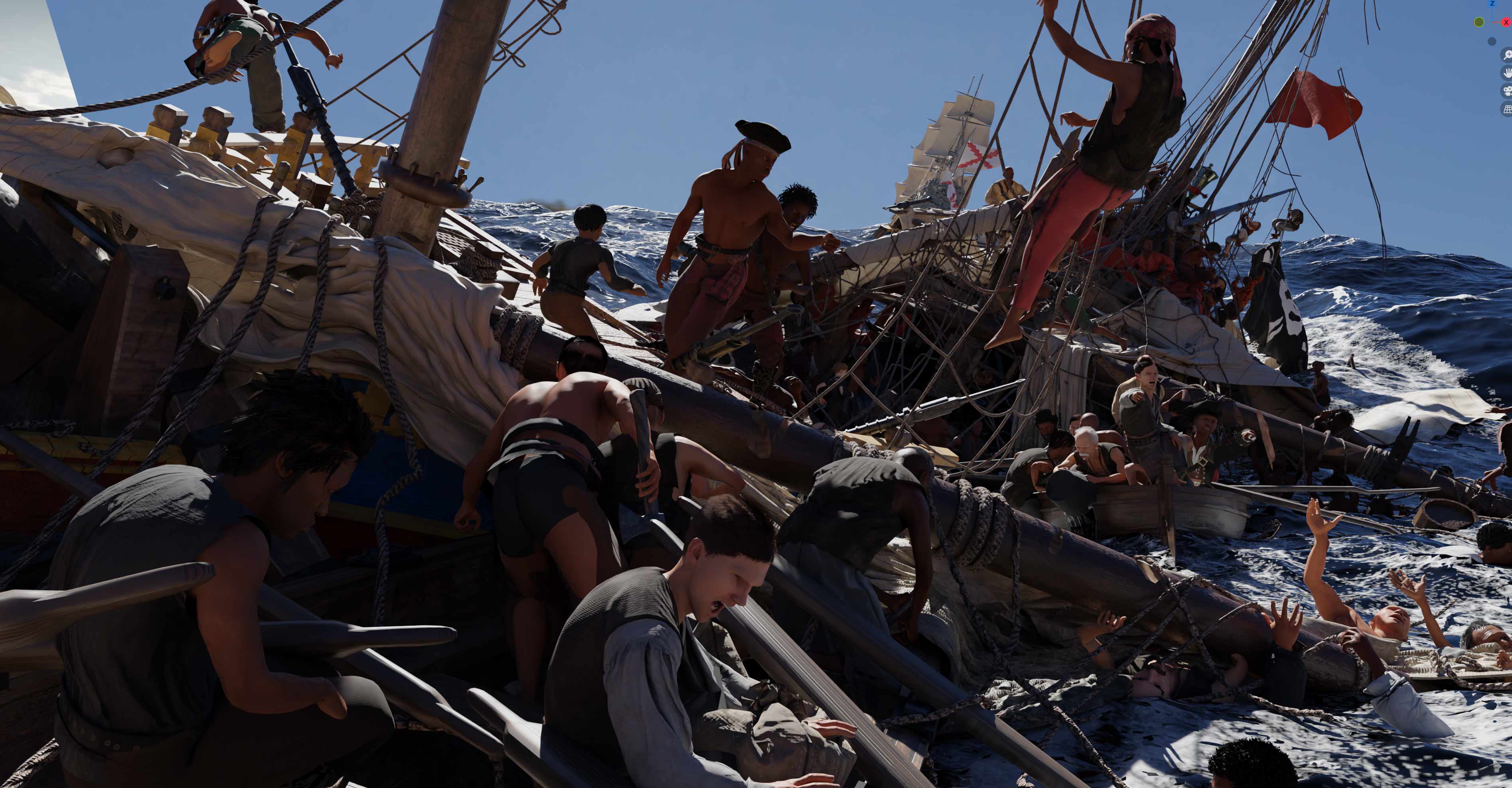
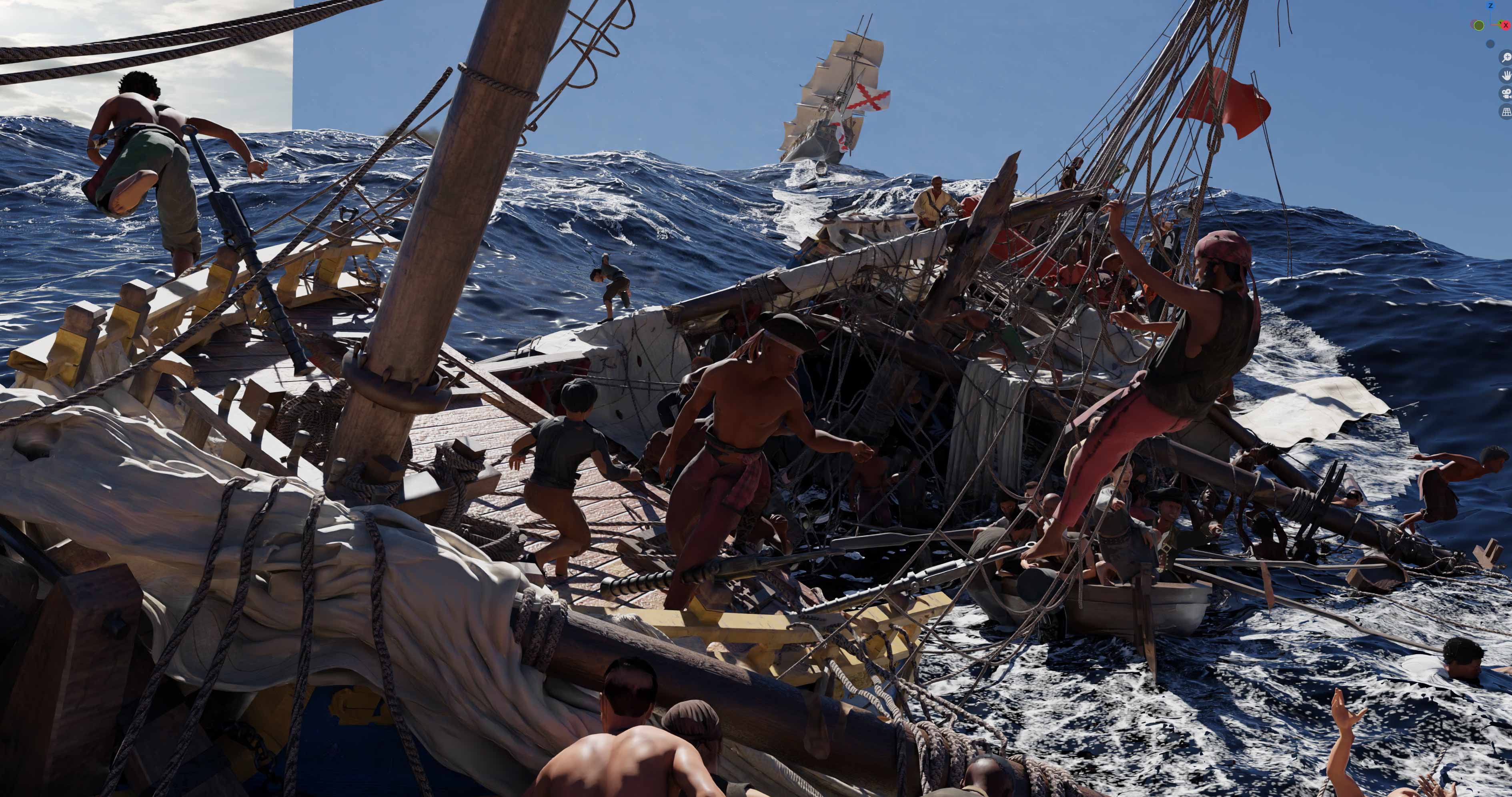
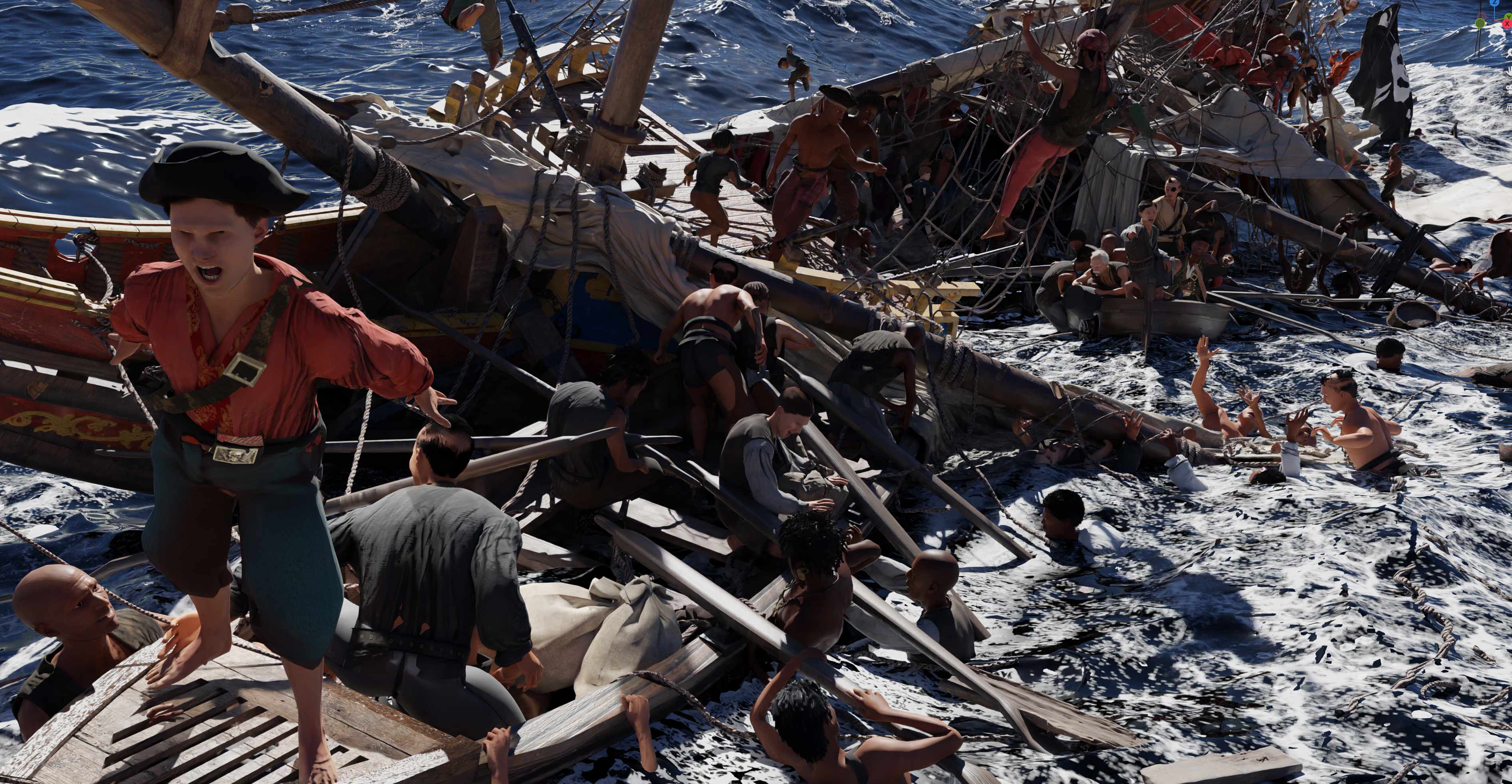
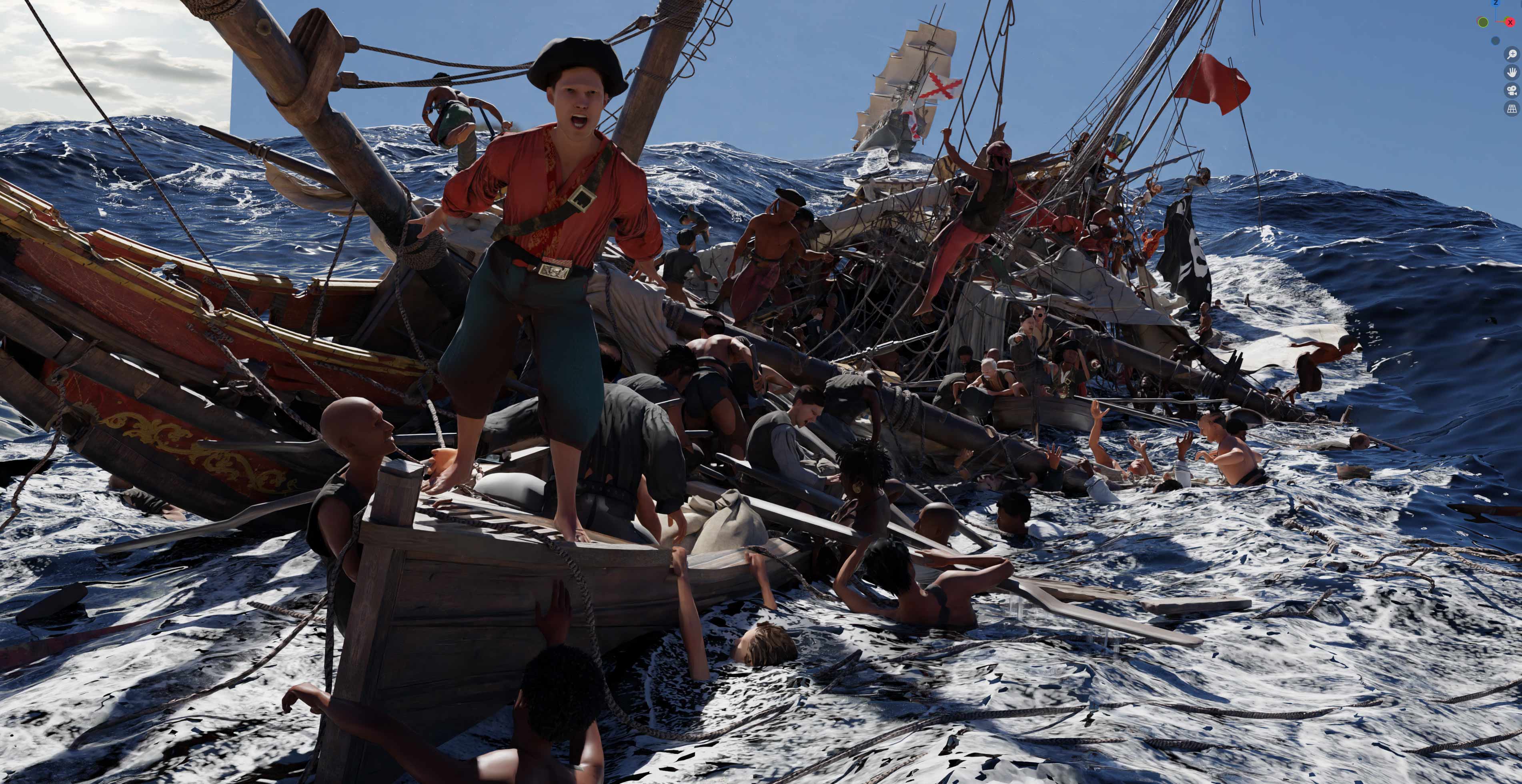
Locking in the Camera
I ended up experimenting a lot with different camera setups in the scene. I suddenly faced a new challenge: I couldn’t render every shot. I had to choose just one image. So the question became: which one tells the story best?
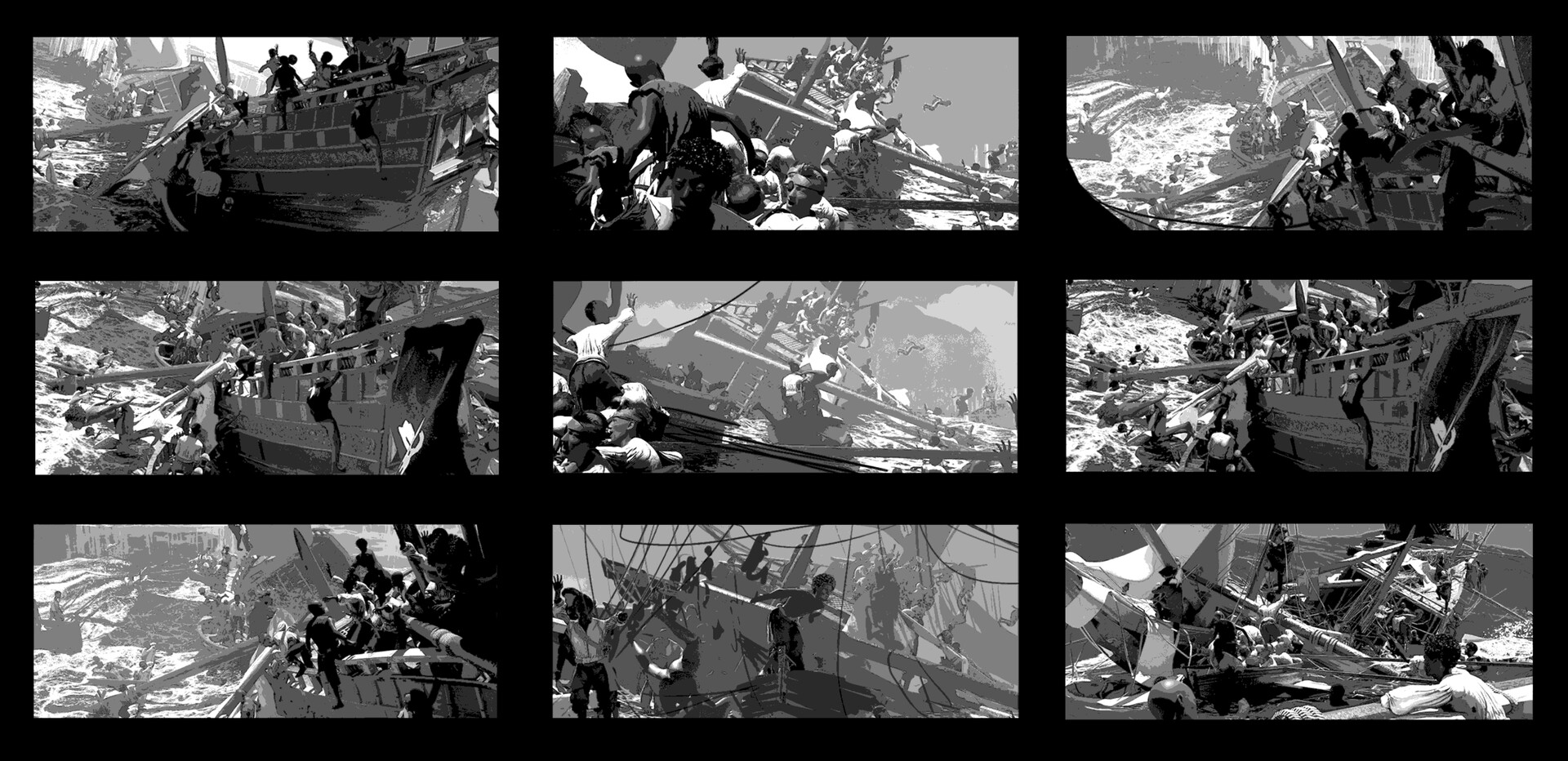
Hard To Choose
To figure out which composition worked best, I needed a different approach: simplify the images, reduce them to their core elements, then compare them side by side. I also asked colleagues, friends, and family for their opinions. The decision wasn’t unanimous, but in the end, the favorite was the one in the bottom right.
How did I create this sheet? Using Blender Cycles, I rendered the mist pass to visualize depth and atmosphere. I then imported the screenshots into Photoshop and applied a posterize effect to create clean, graphic compositions. However, for this process, the focus was more on experimenting with camera placement and composition than value accuracy.
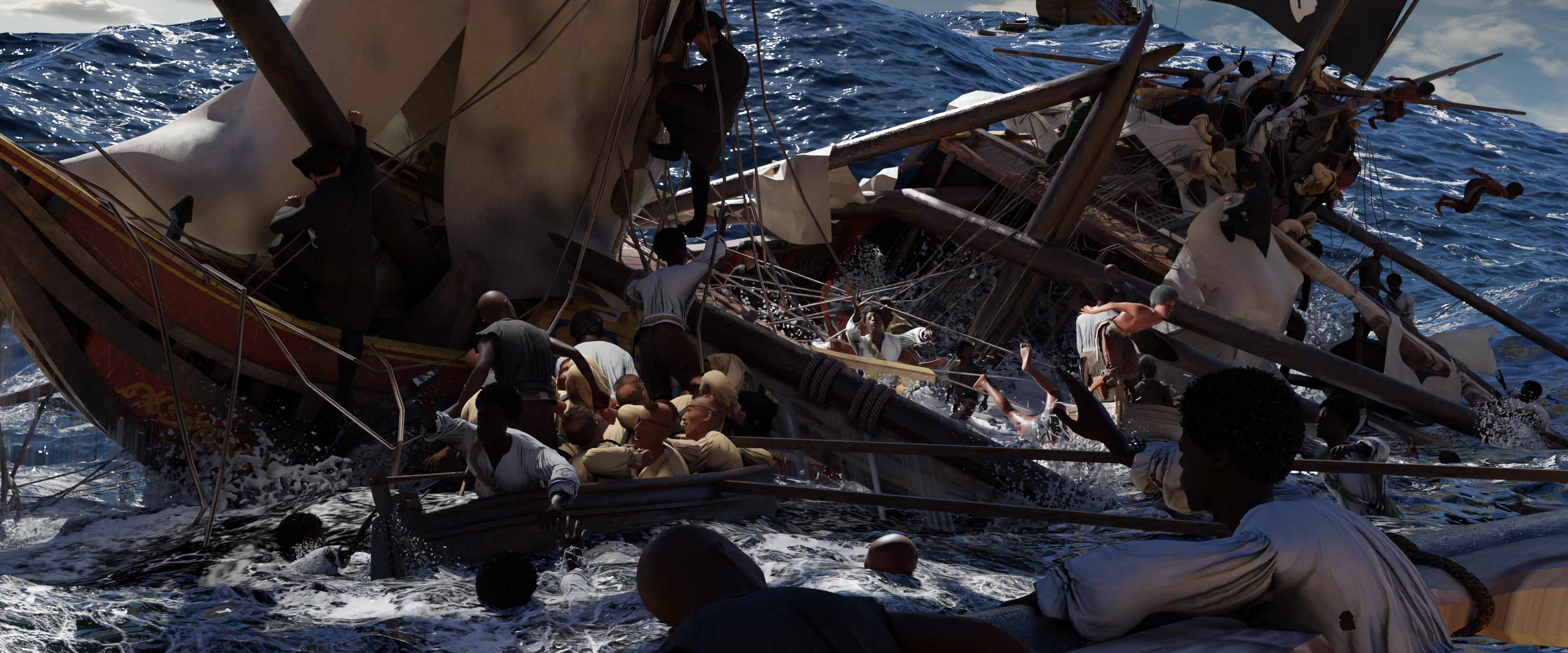
As mentioned above, this was meant to be the final shot. Originally, there were still figures and masts in the foreground, and the composition was more strongly framed by large, hanging sails. The lighting was also focused more on the center, while the ship’s stern remained in shadow. But I felt that the middle section of the ship was actually the hardest to read visually.

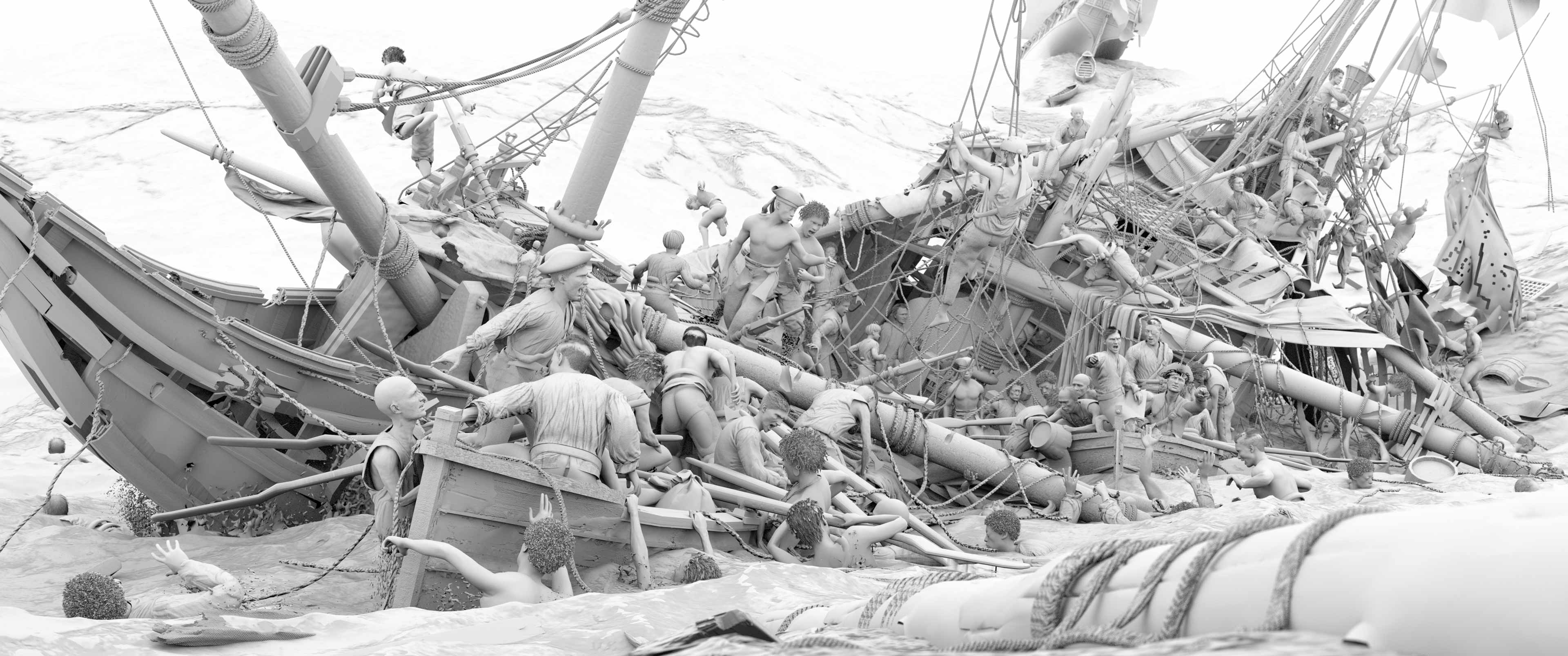
AO passes. Love it. The ropes were done with Blender’s cloth and wind simulation.
I recommend rendering out clown passes (e.g. using blenders workbench render mode + flat color, materials), or the position node and mist pass.
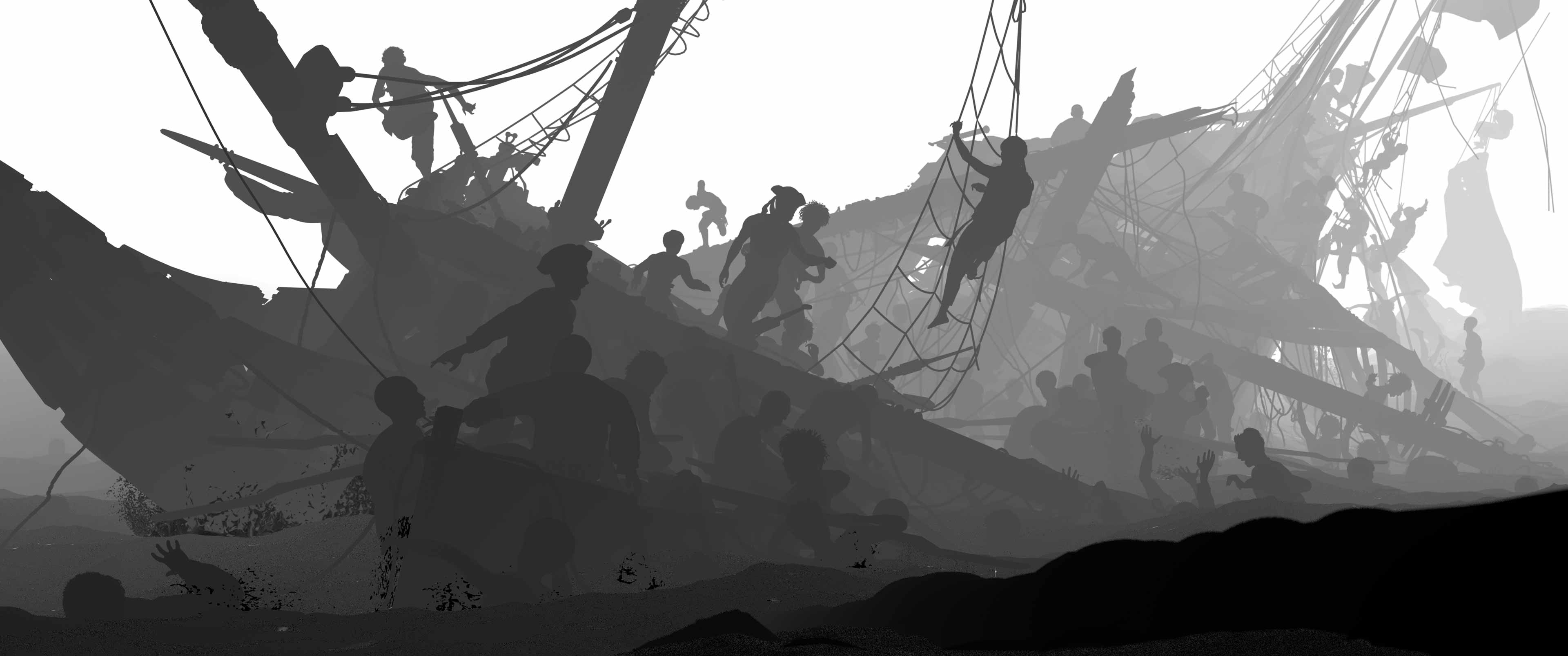
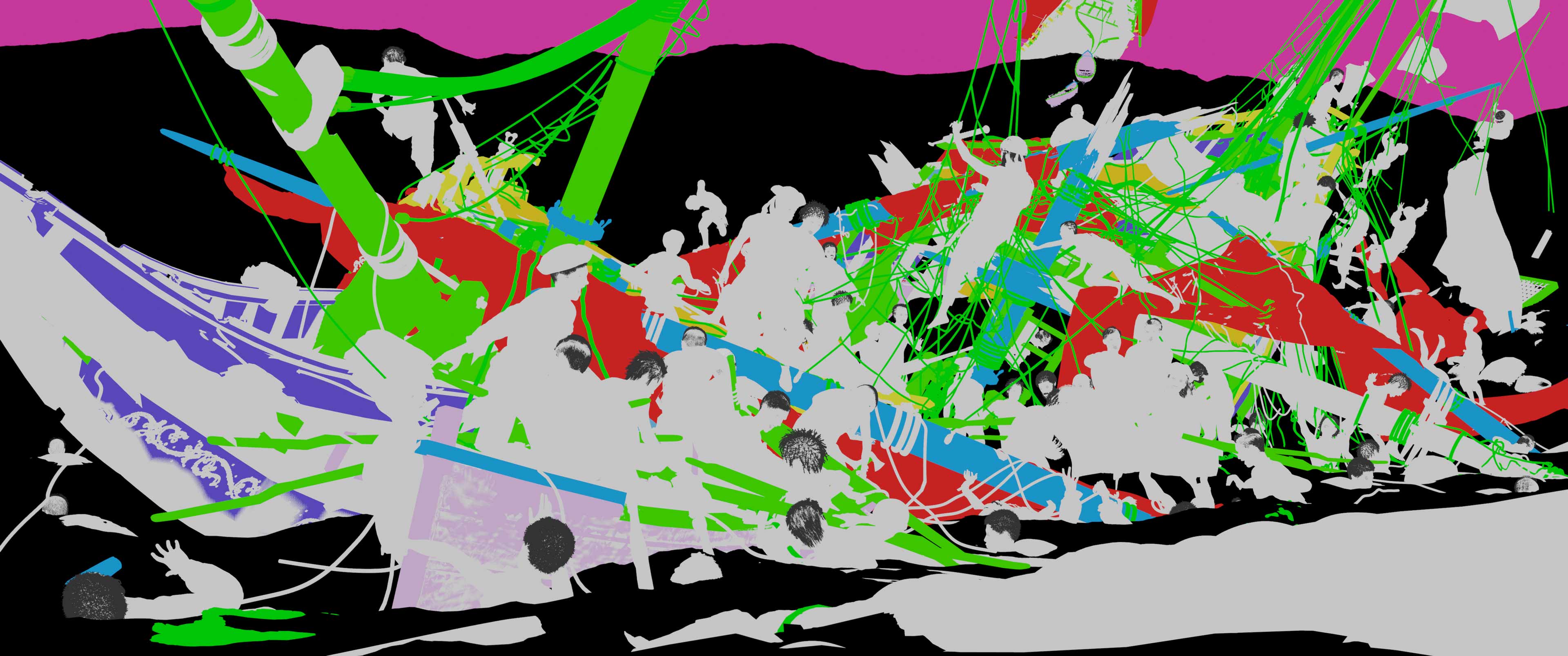
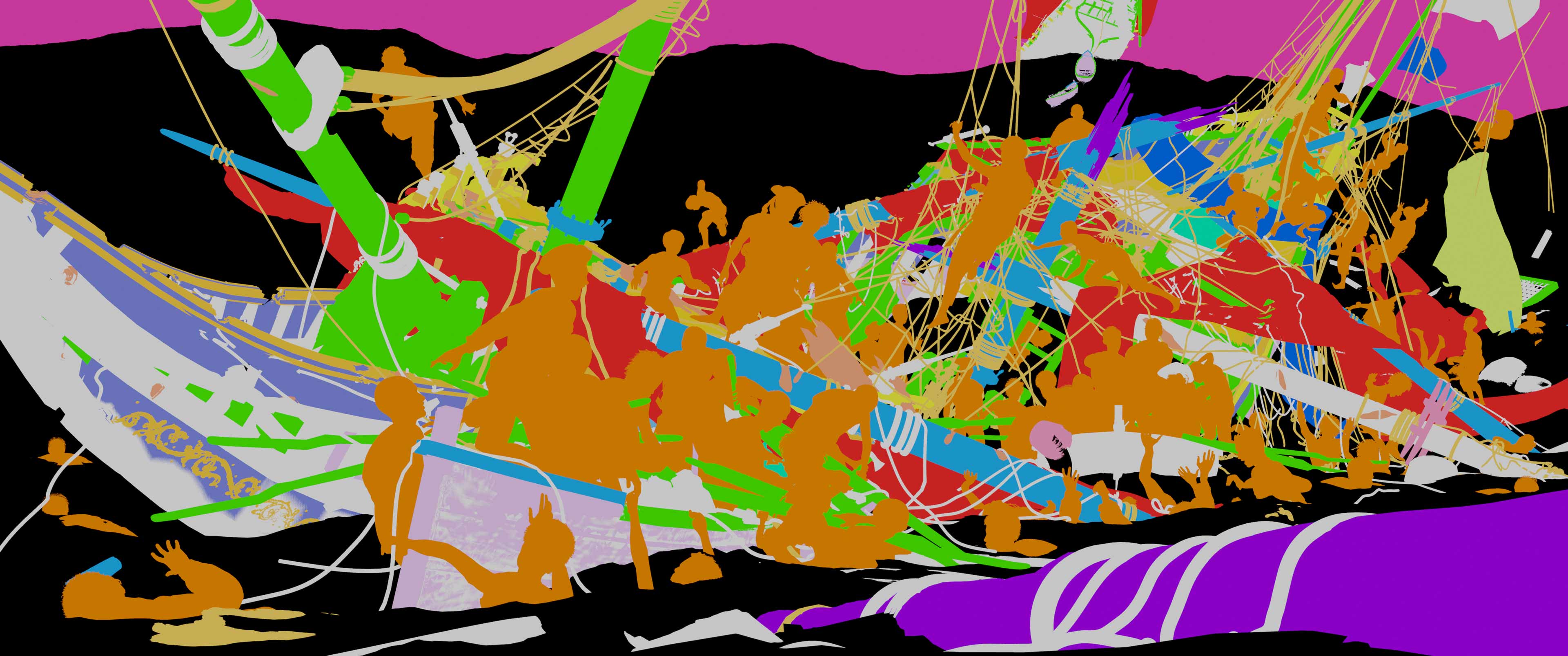
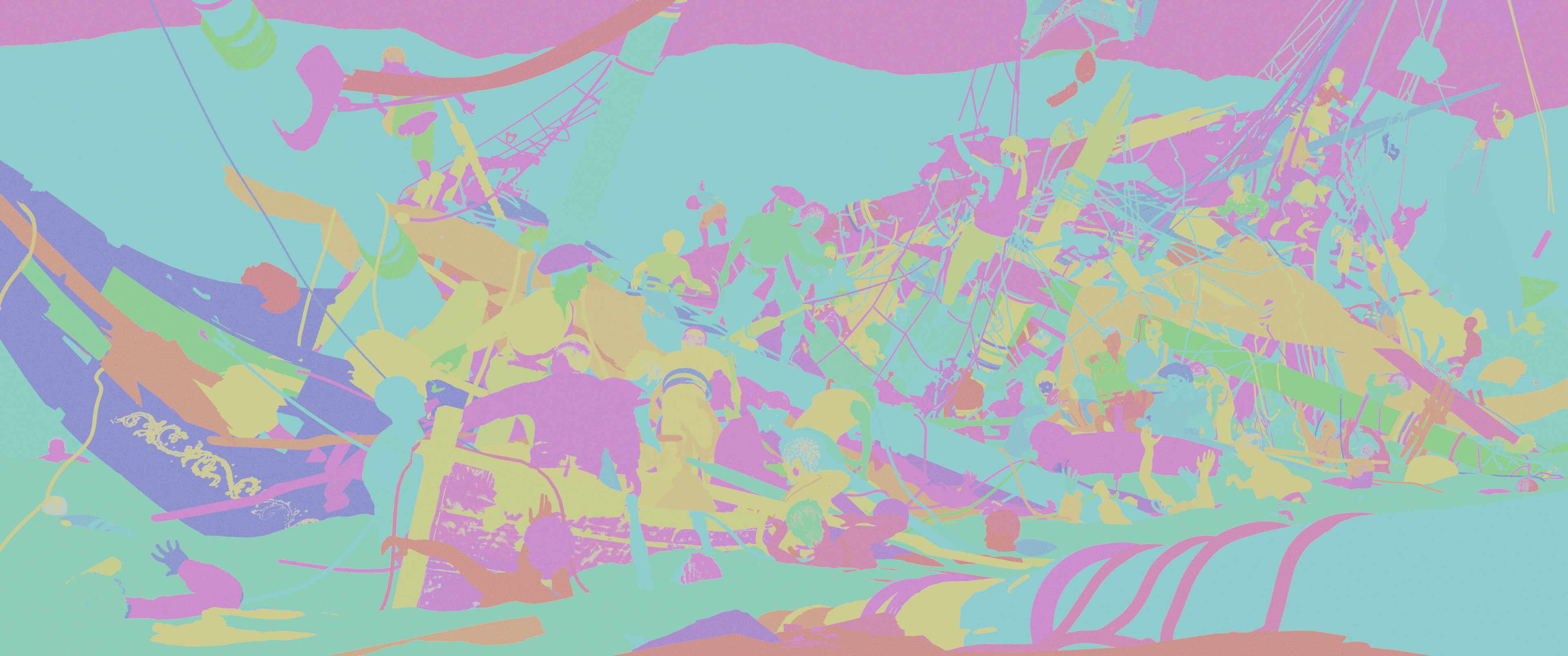
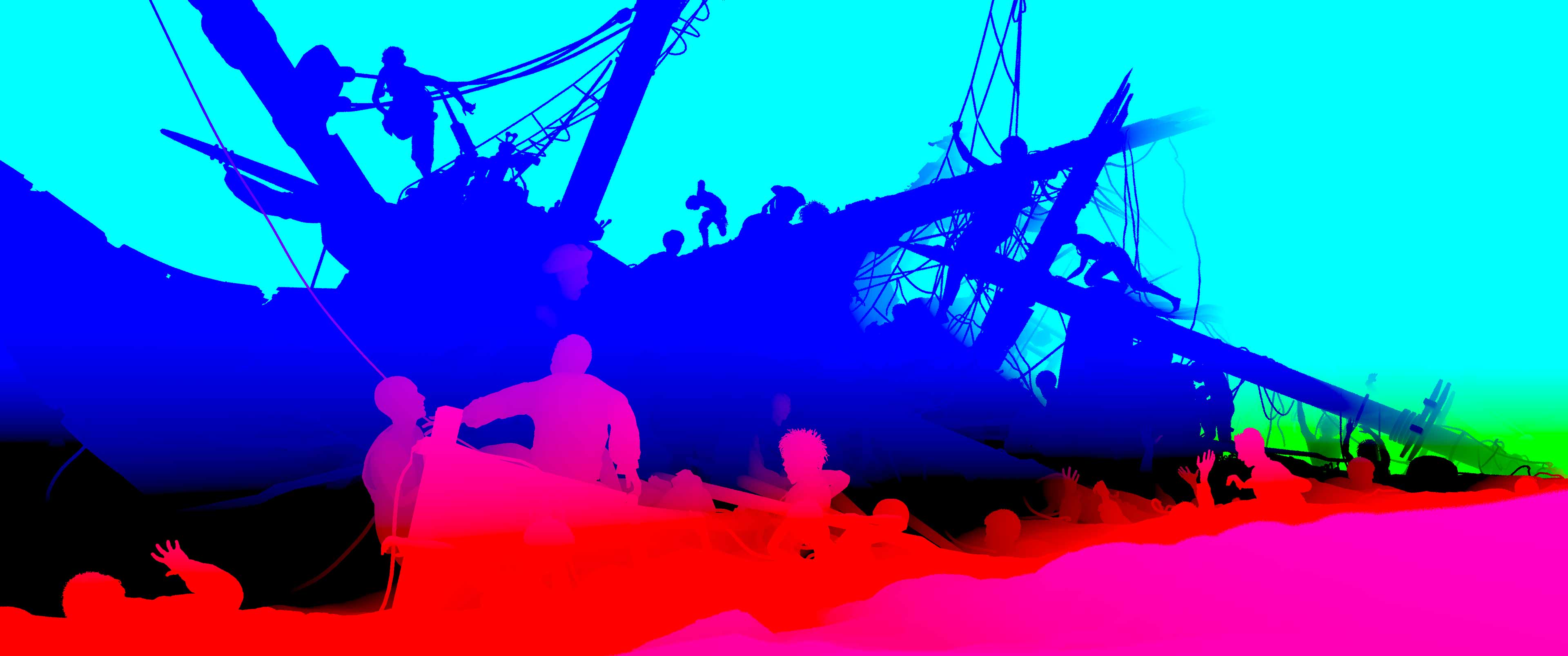
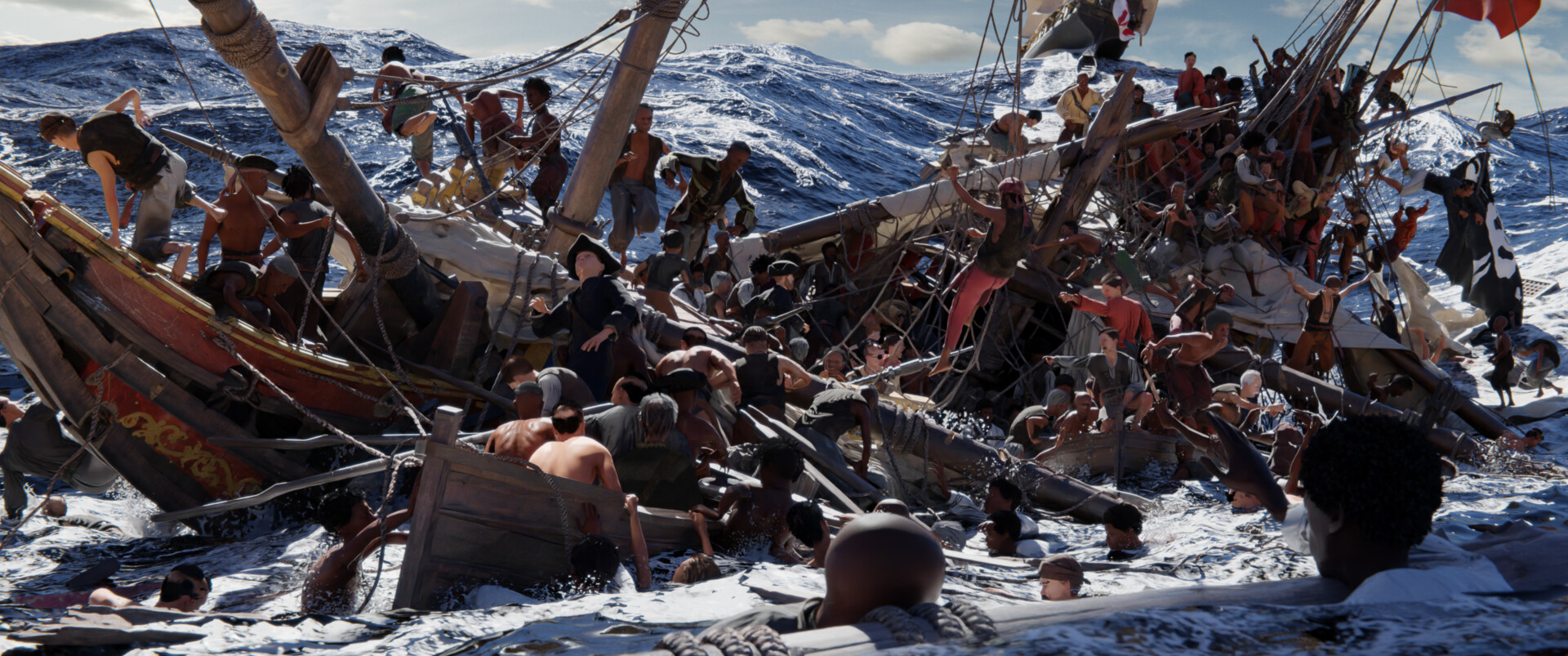
Crew
A typical pirate ship during the Golden Age of Sail, around 30 meters long with two masts, such as a brigantine or pinnace, would often carry a crew of 60 to 100 men. This was far more than a naval or merchant vessel of the same size, which might only require 20 to 40 sailors to operate efficiently.
Pirates deliberately over-crewed their ships. The extra manpower was essential for boarding enemy vessels, sailing captured prizes, and maintaining constant readiness for battle. With no automation and physically demanding sailing conditions, every task, from handling sails to loading cannons, required many hands. Life on board was cramped and chaotic.
This intense, overpopulated environment is something I wanted to reflect in this image, so I put 60 persons in there, including runaways from naval or merchant service, deserteurs, indegous people, freed or escaped slaves, kids, bandits, outlaws.
Artistically its a bit too crowded. So I decided to rather create people-islands of interested to clean up the composition.
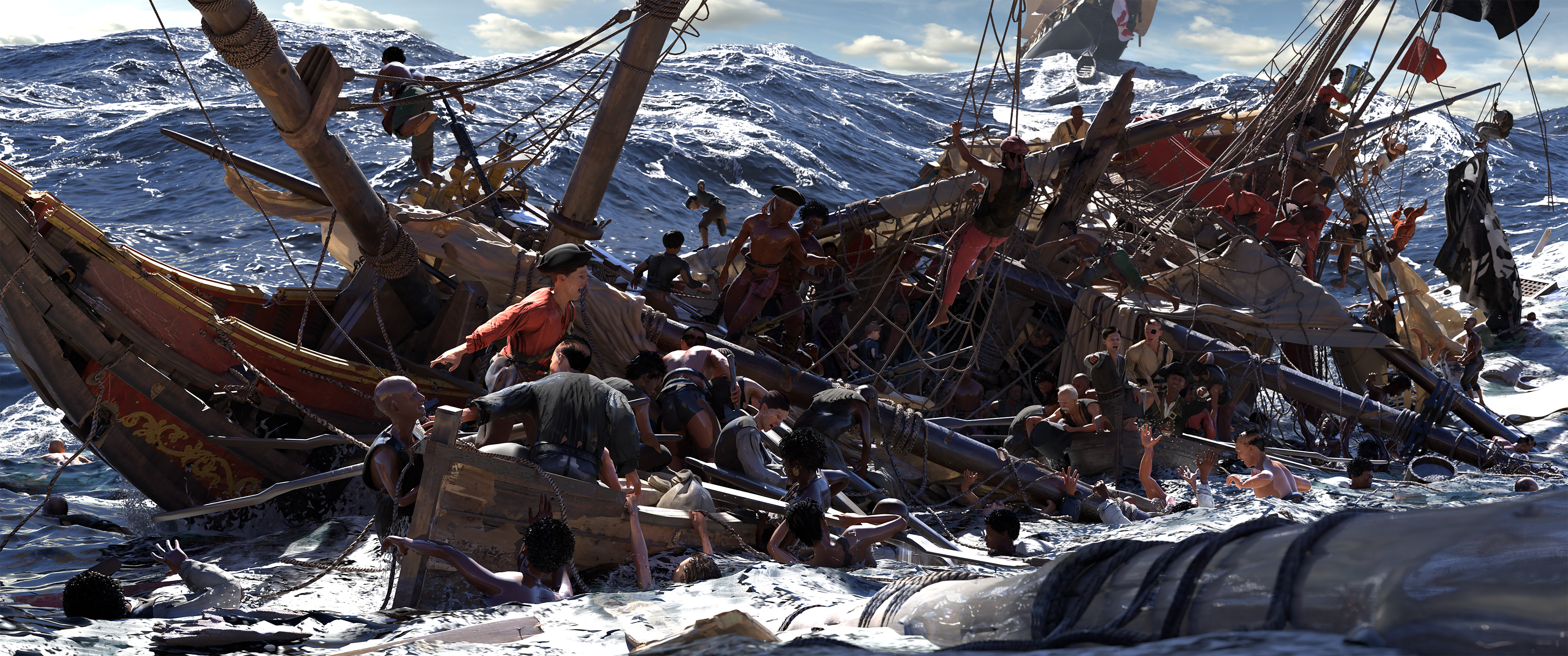
Final 3D stage before rendering and moving on to overpainting, texture bashing, and applying post-processing effects in Photoshop. You can find the final image is at the very top of this blog post.
These are some close-up detail callouts.
